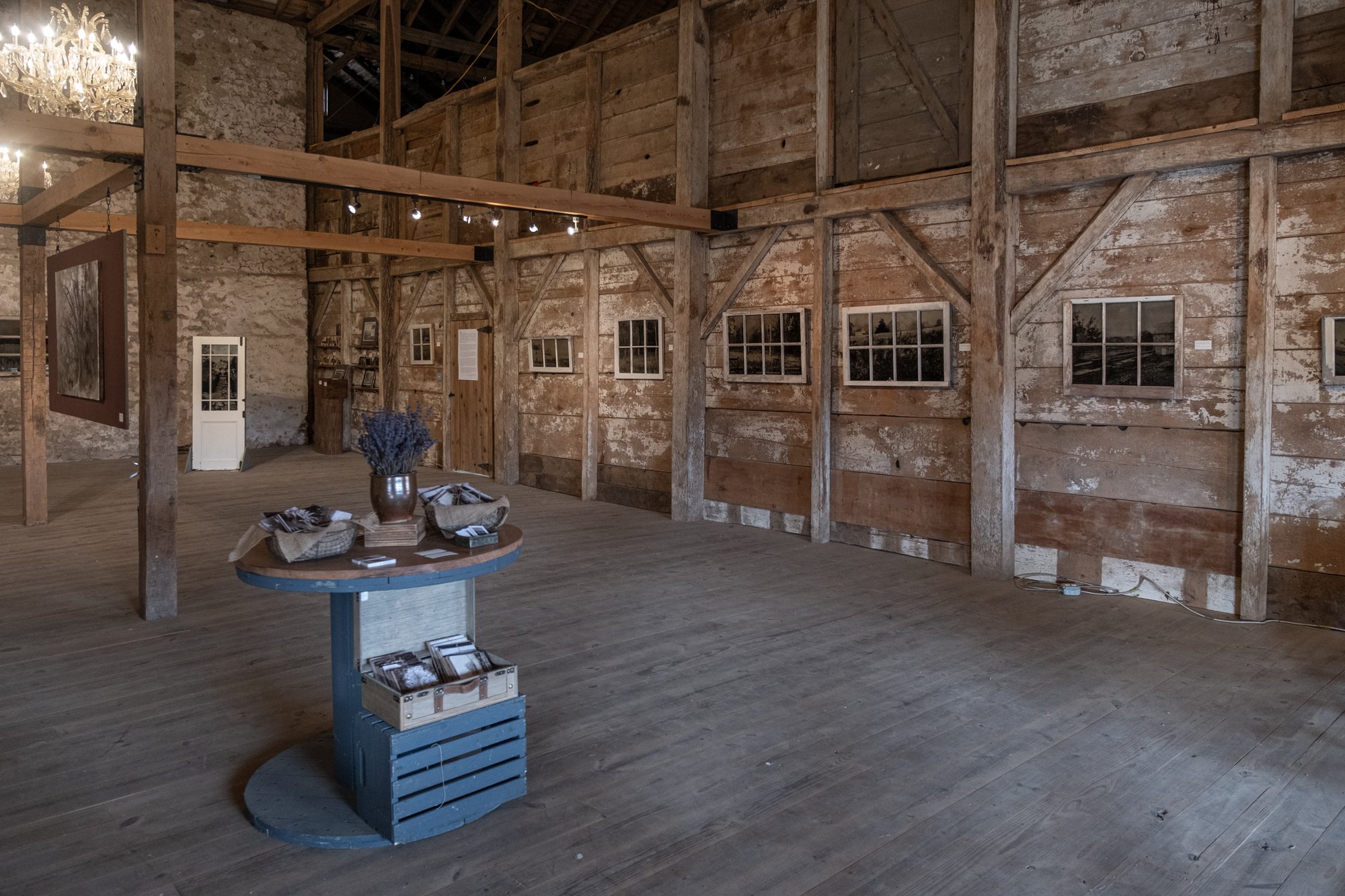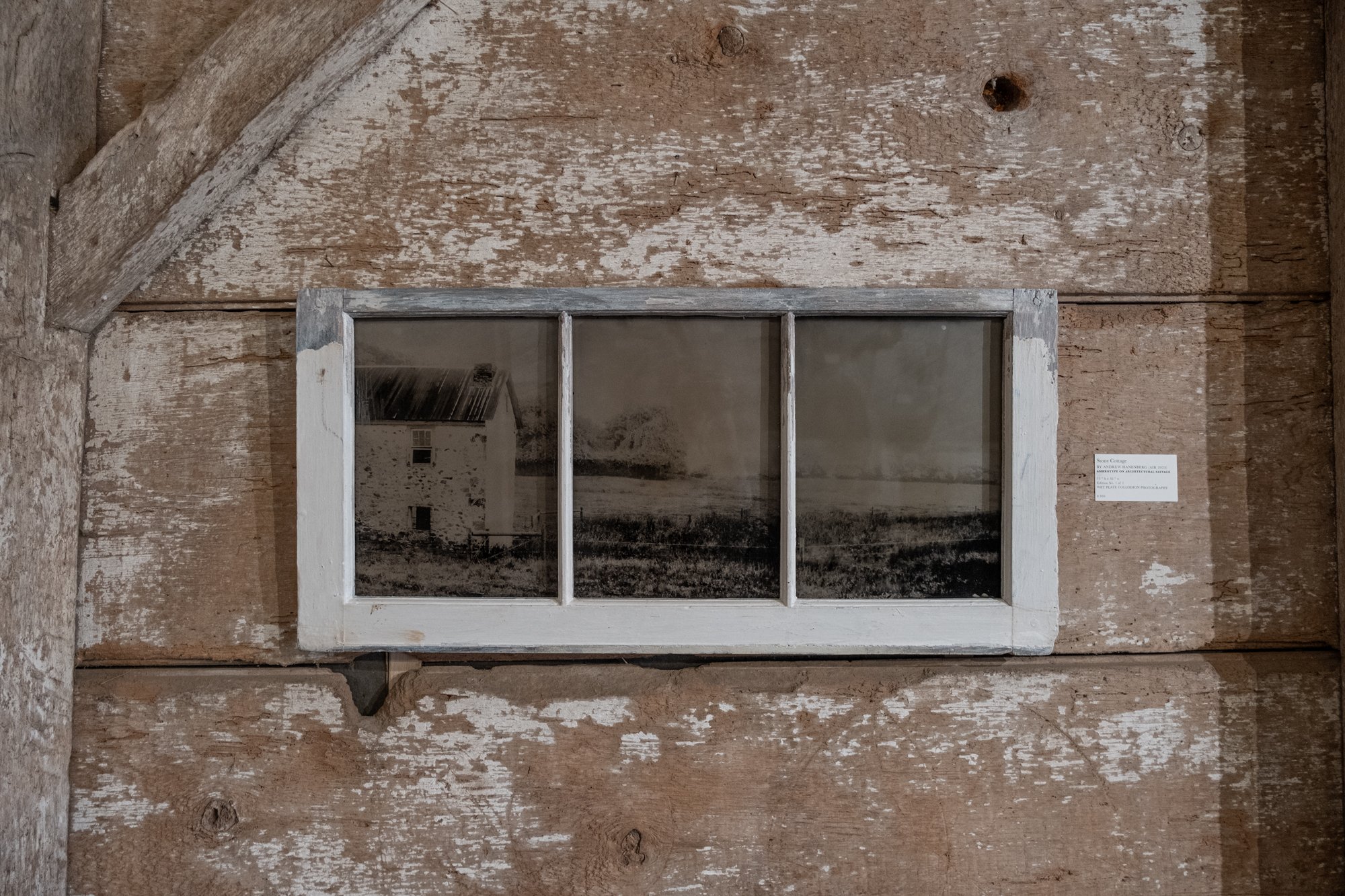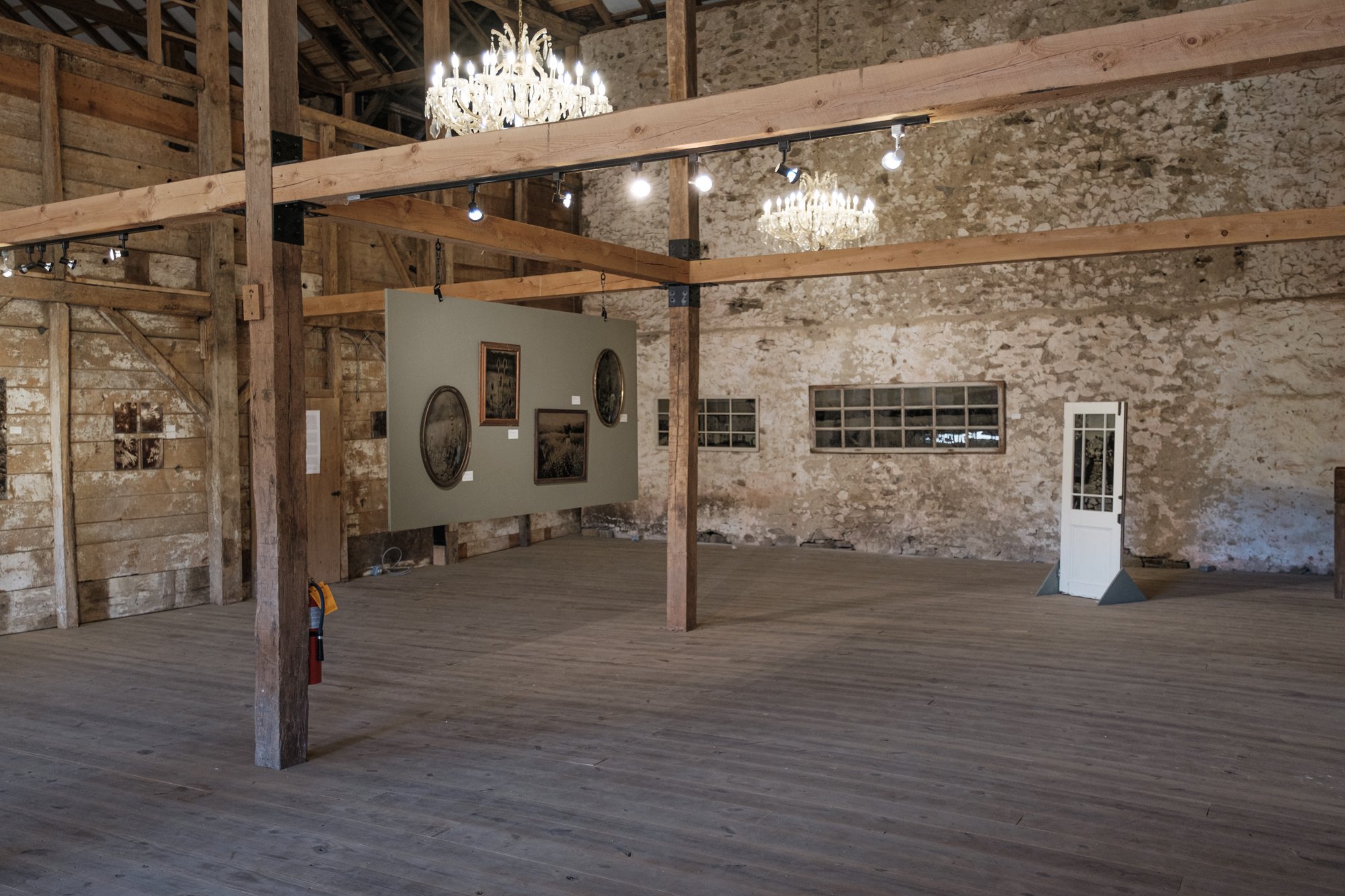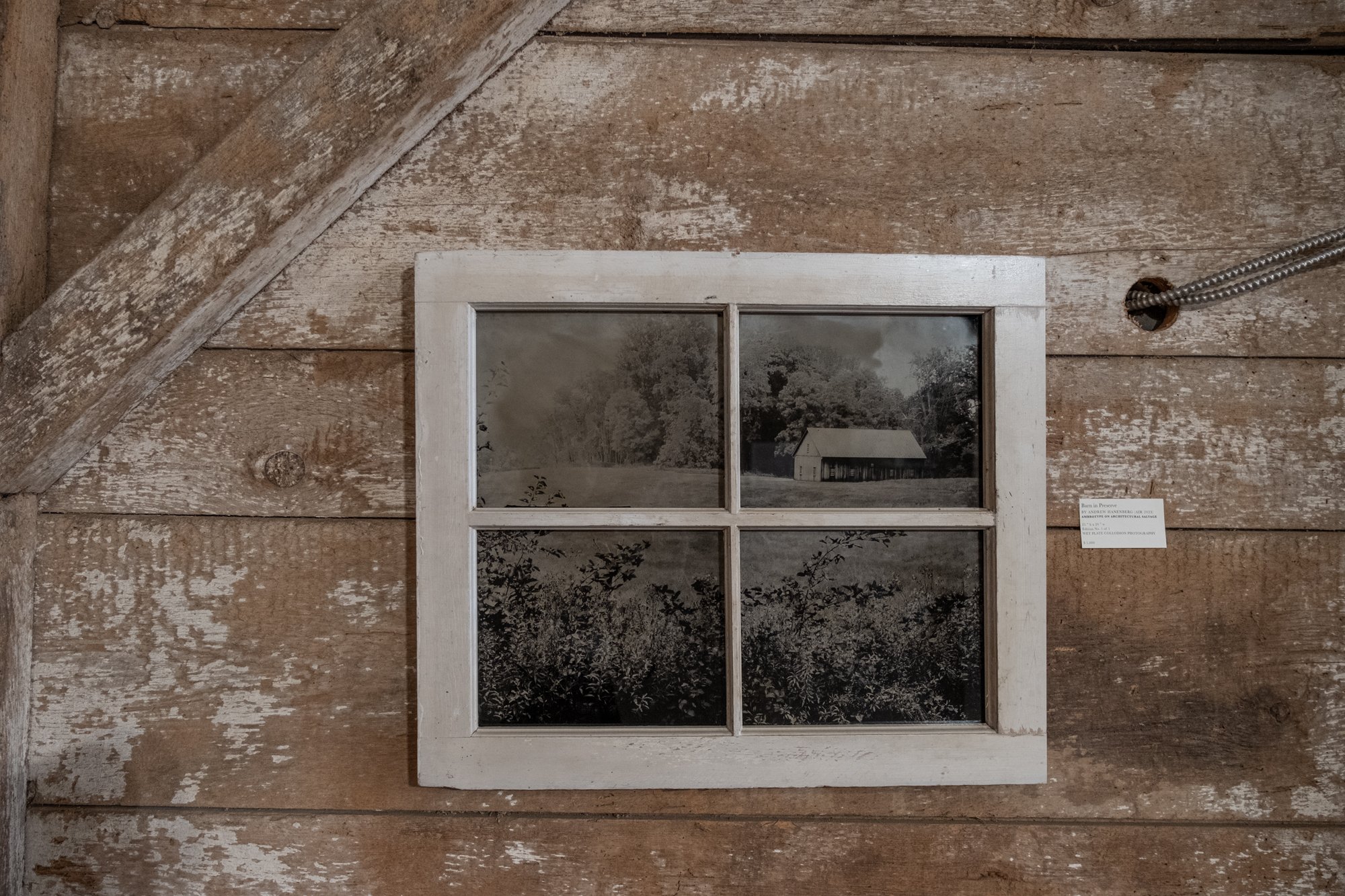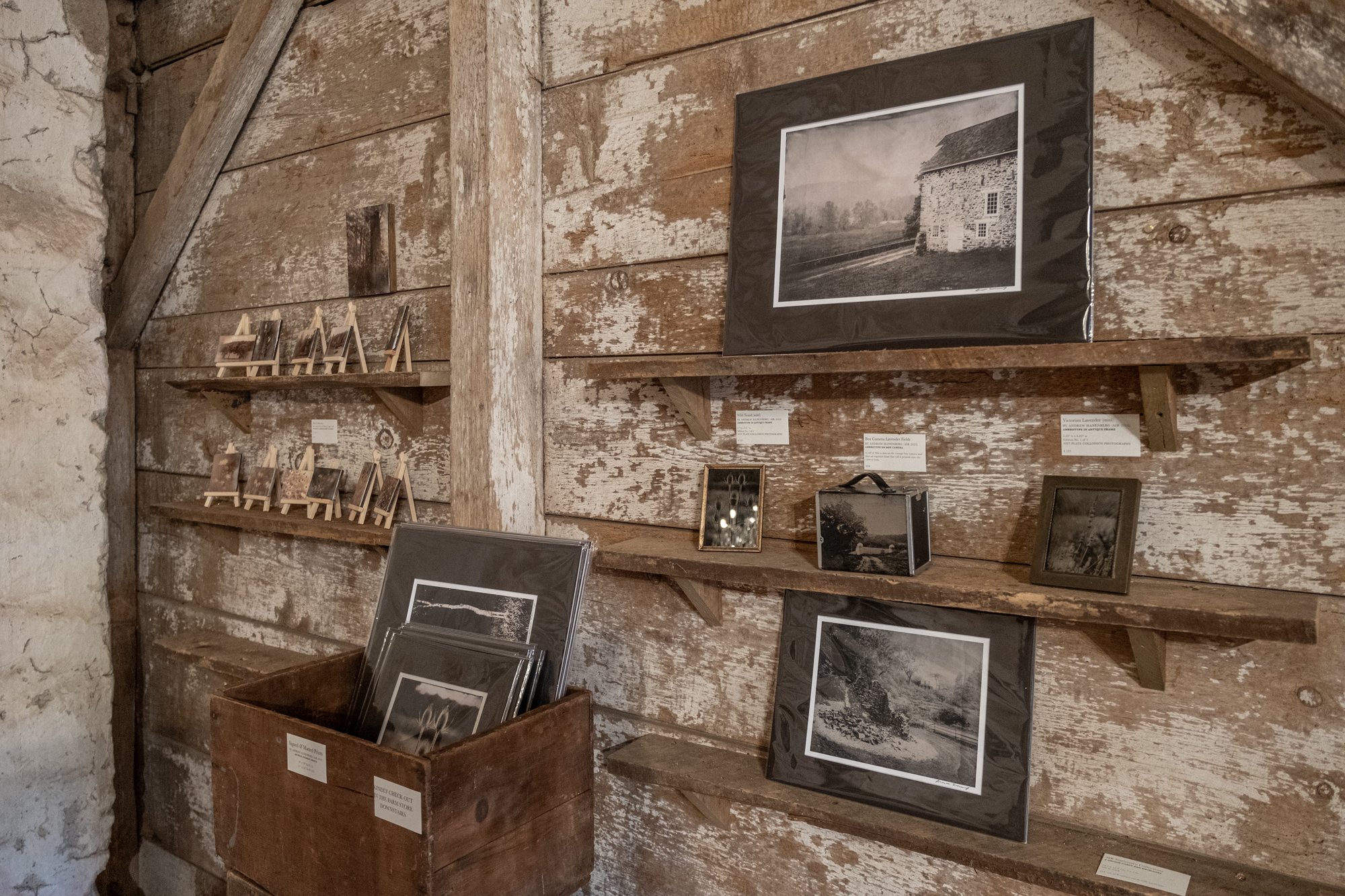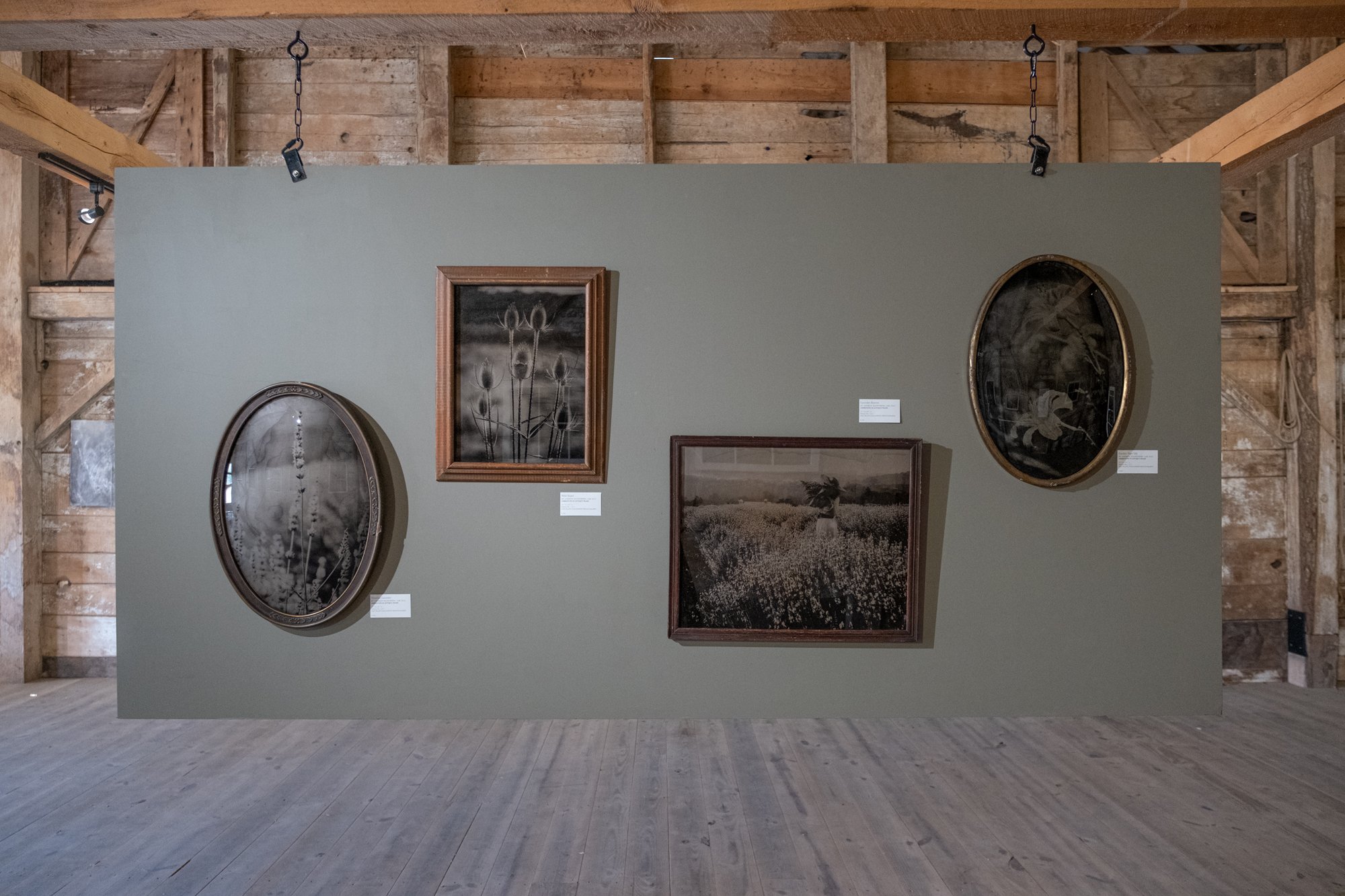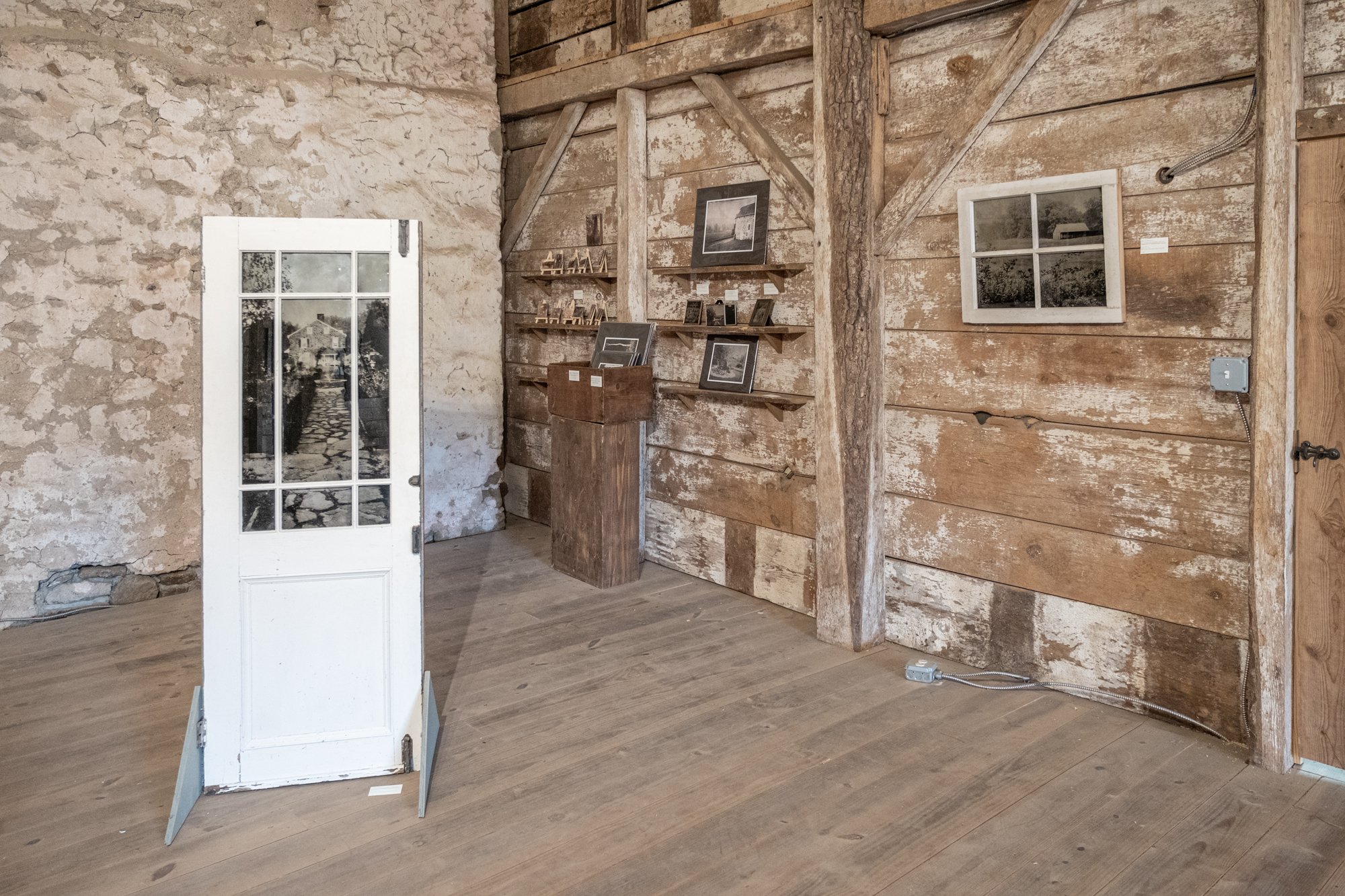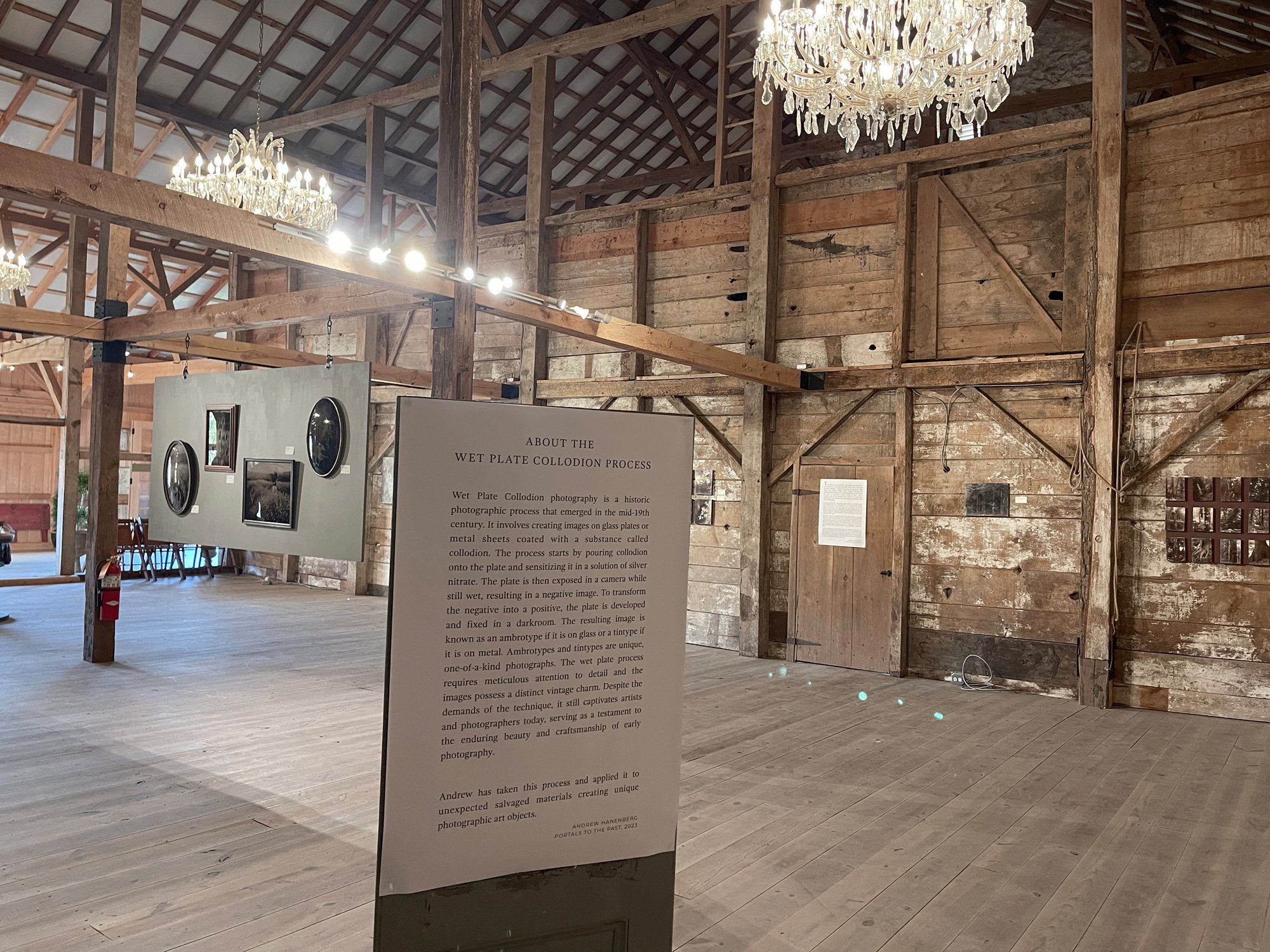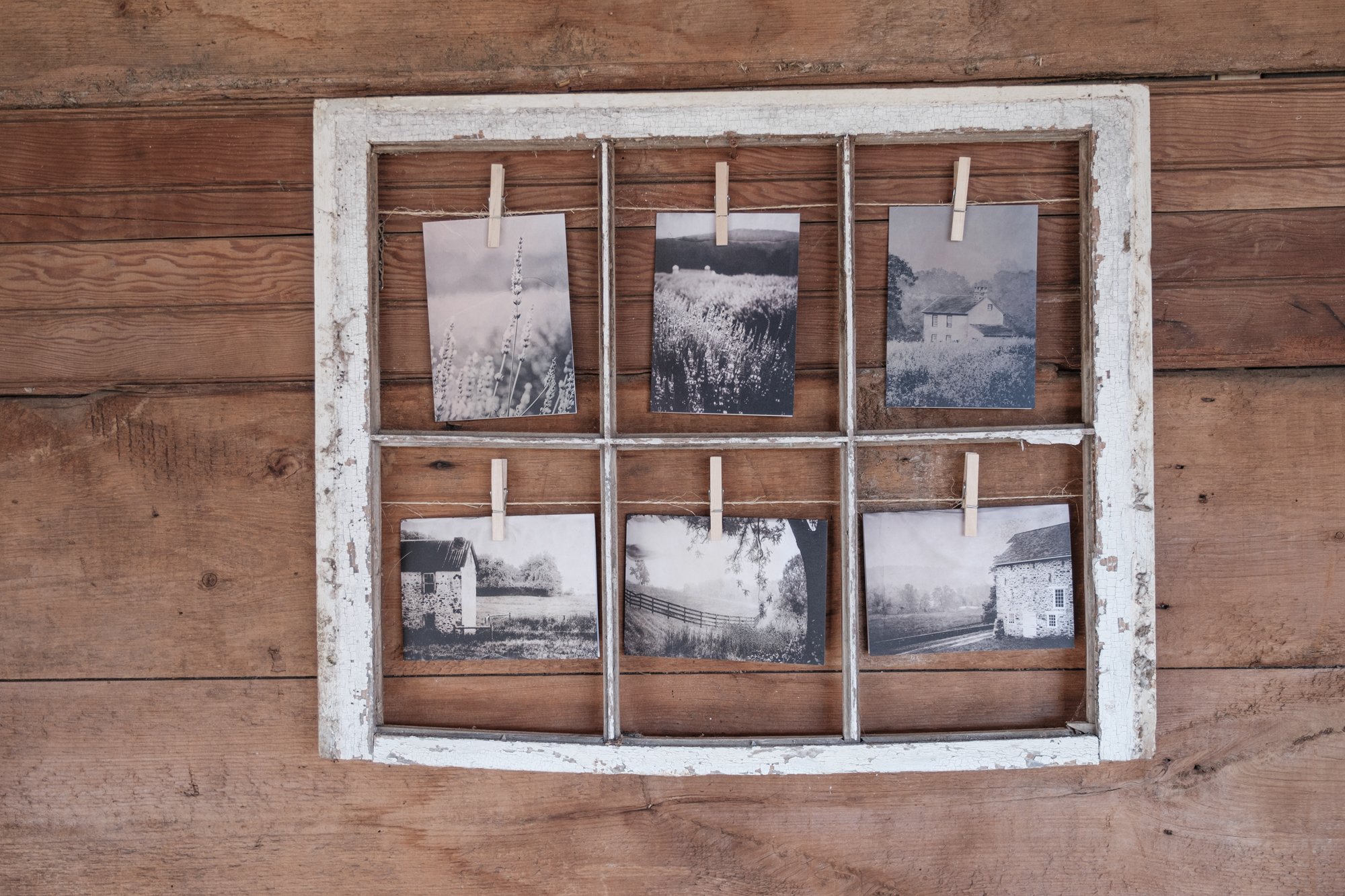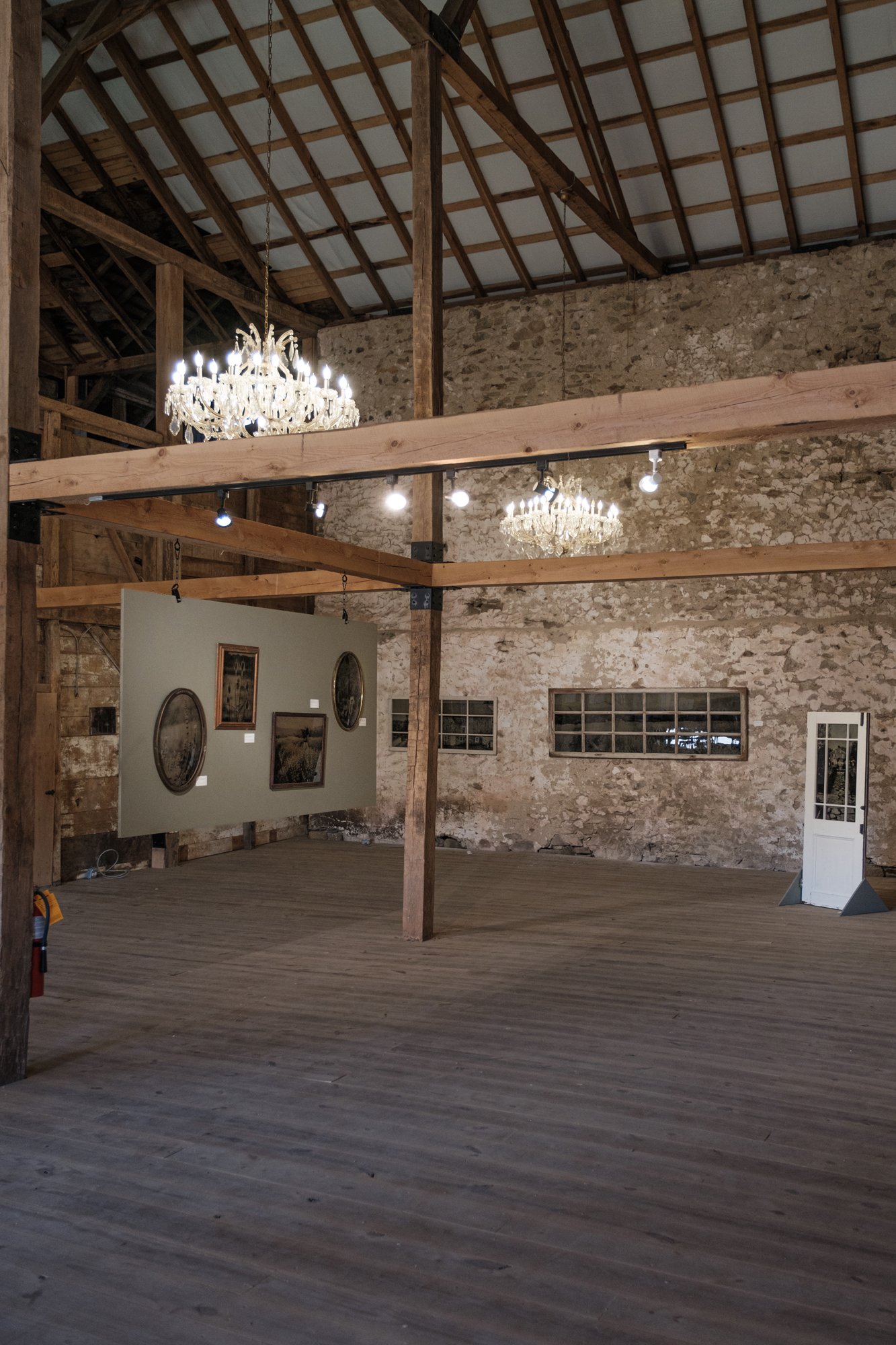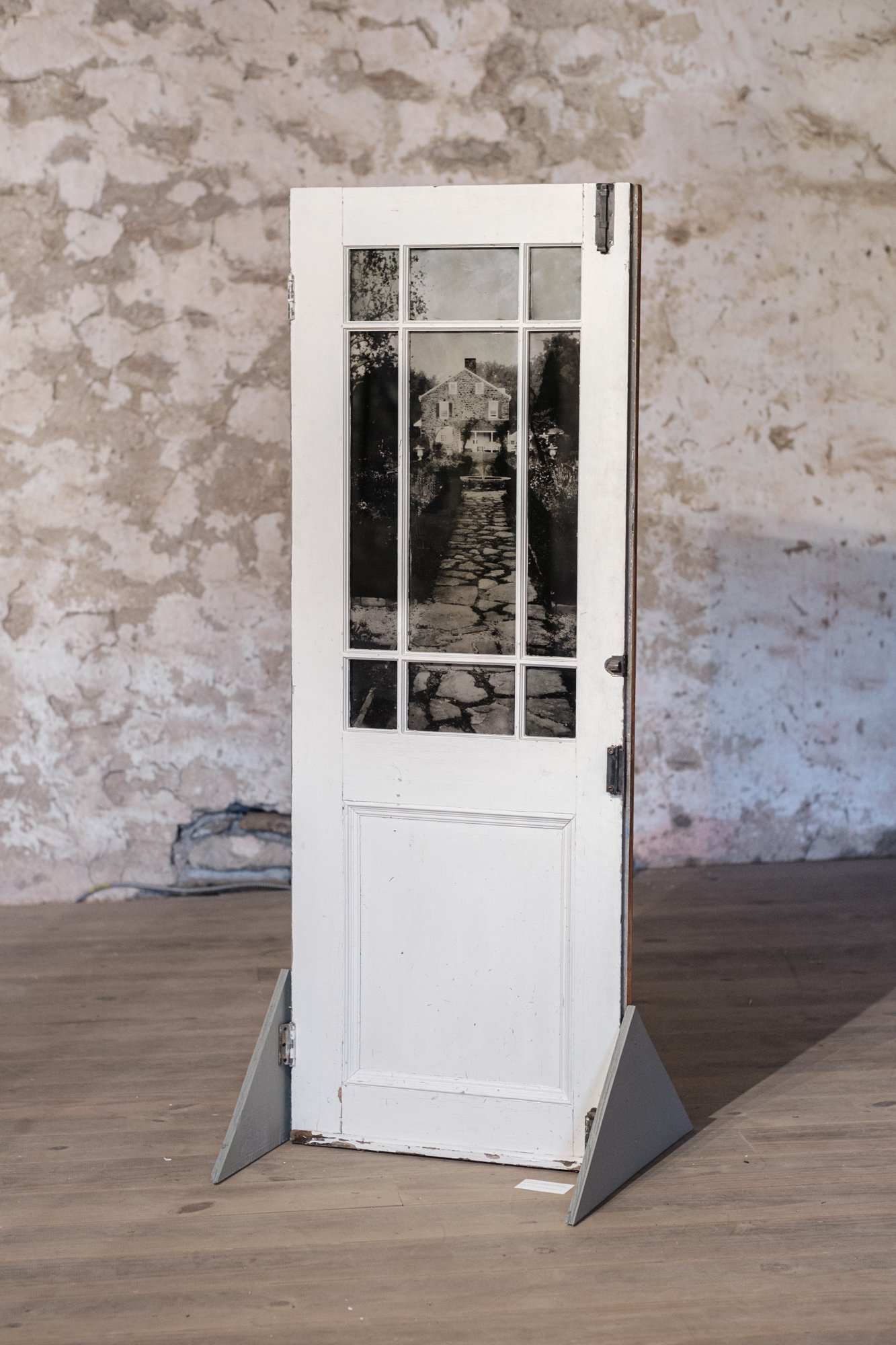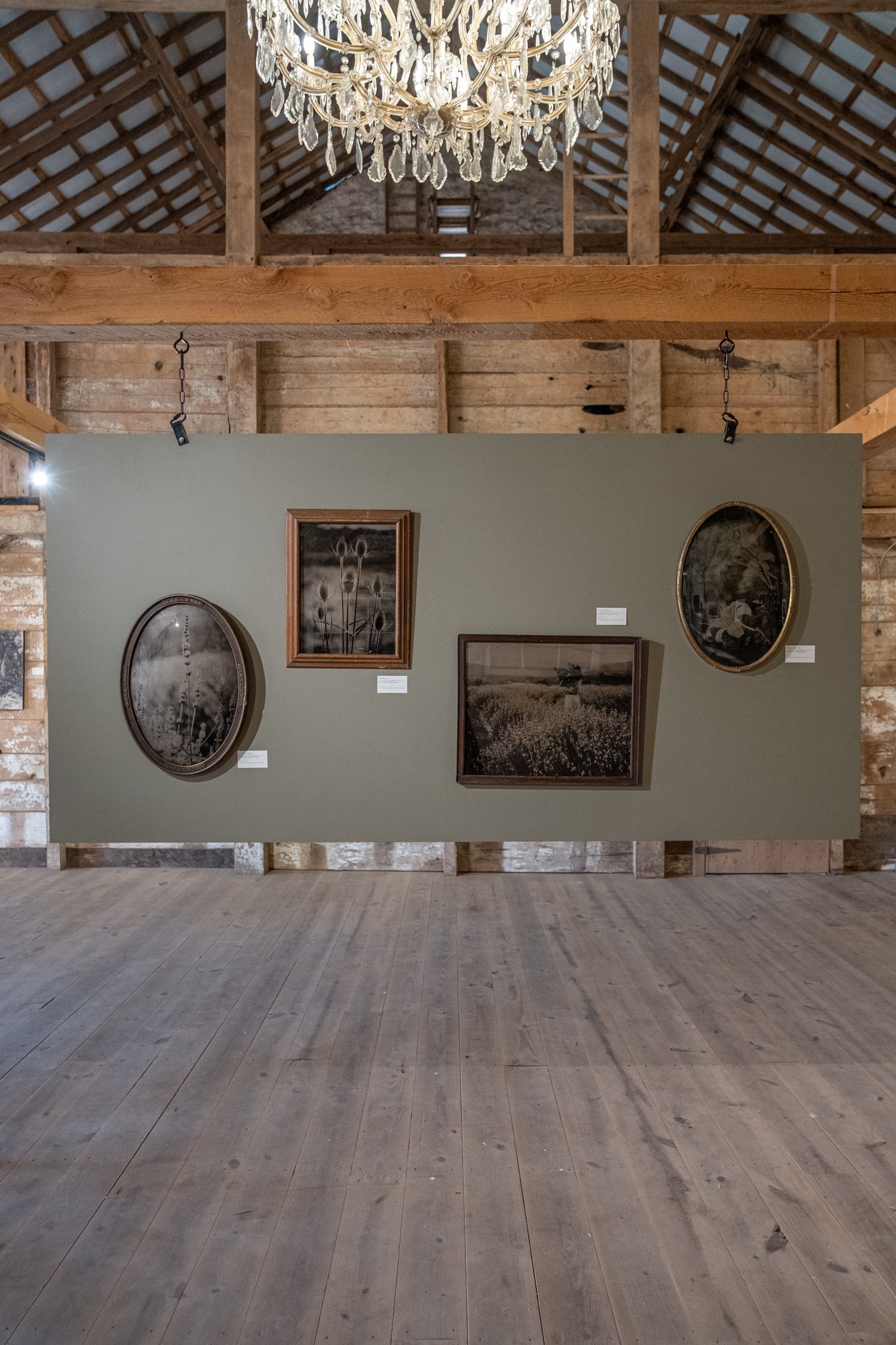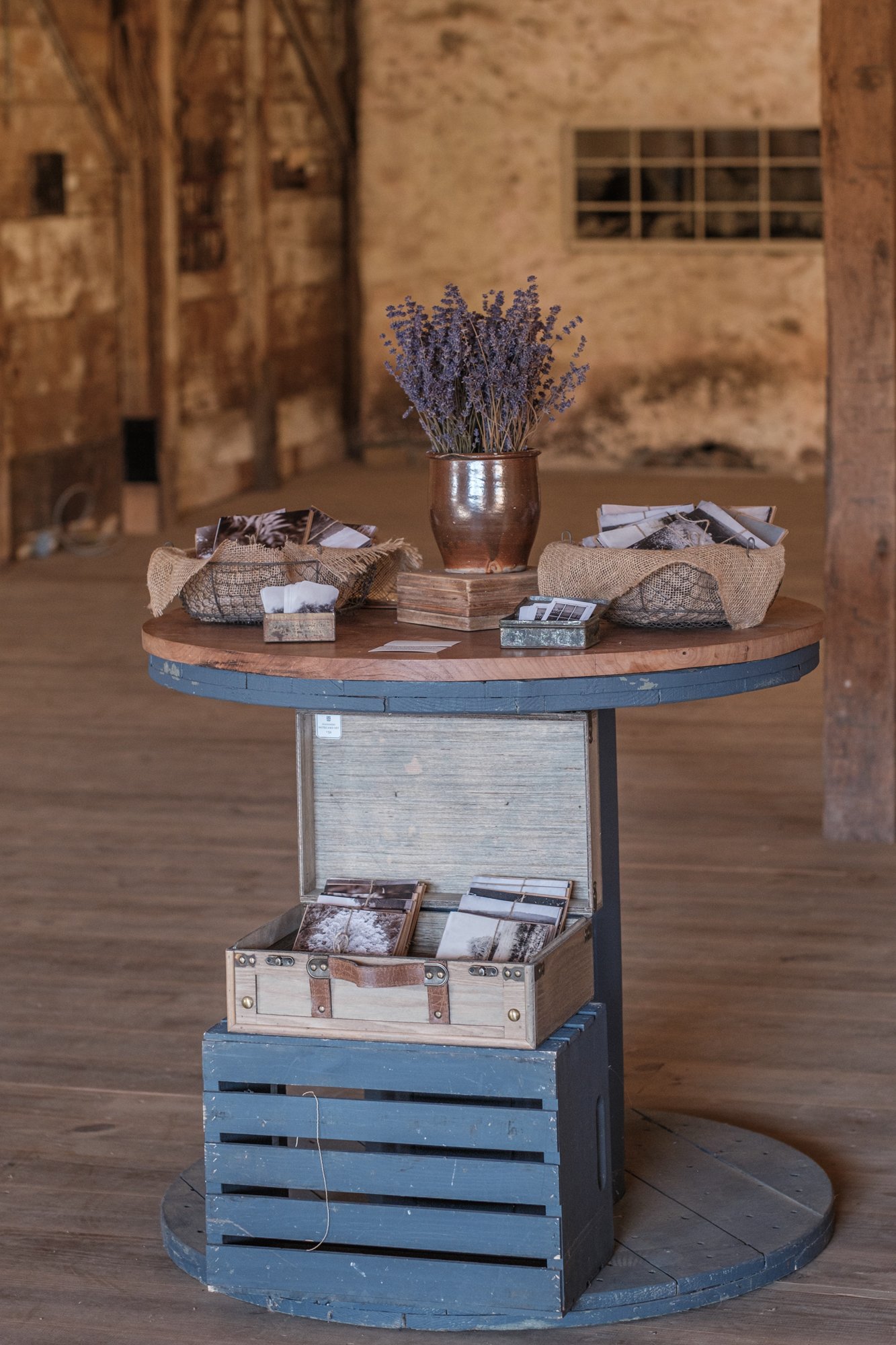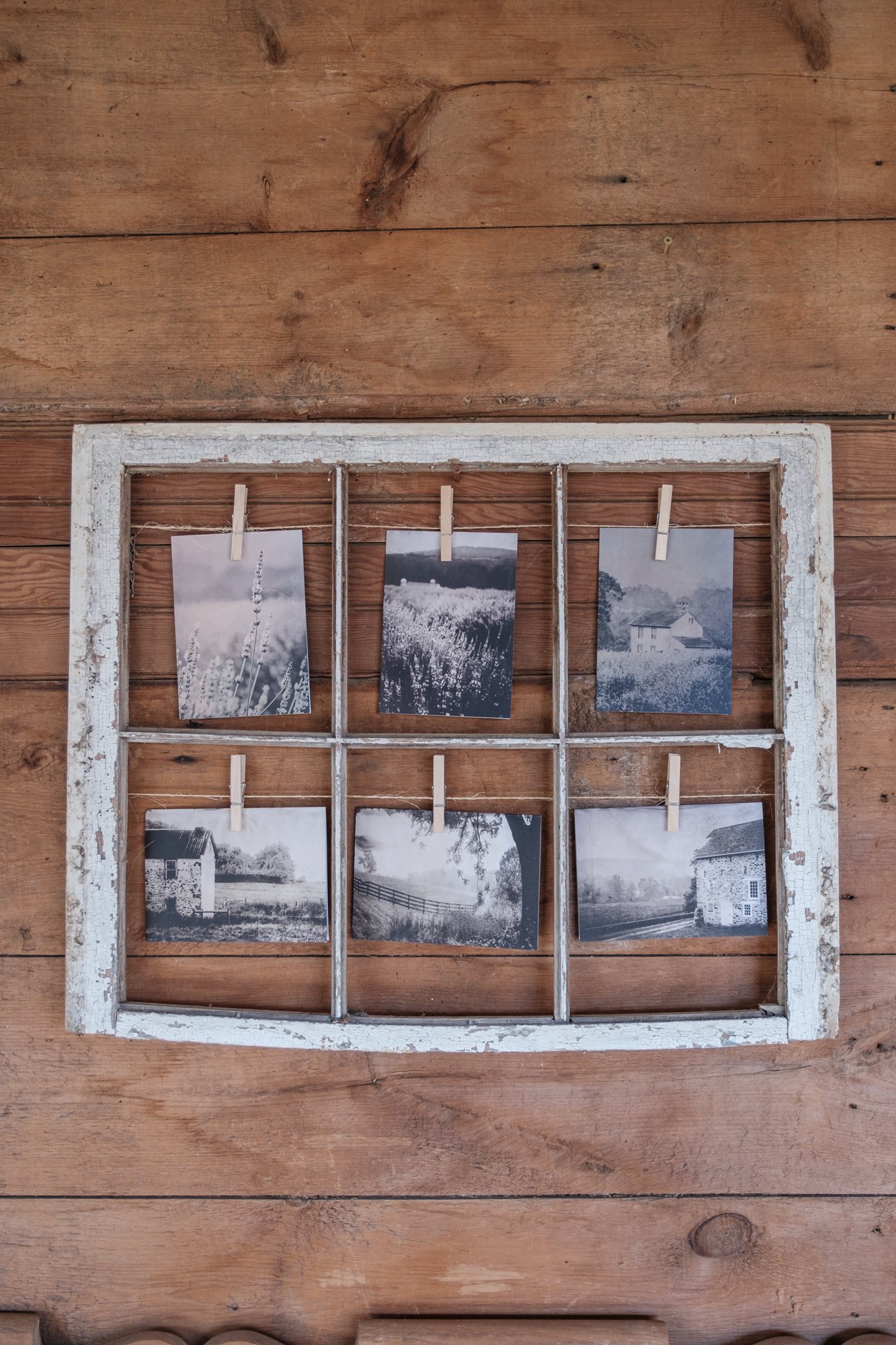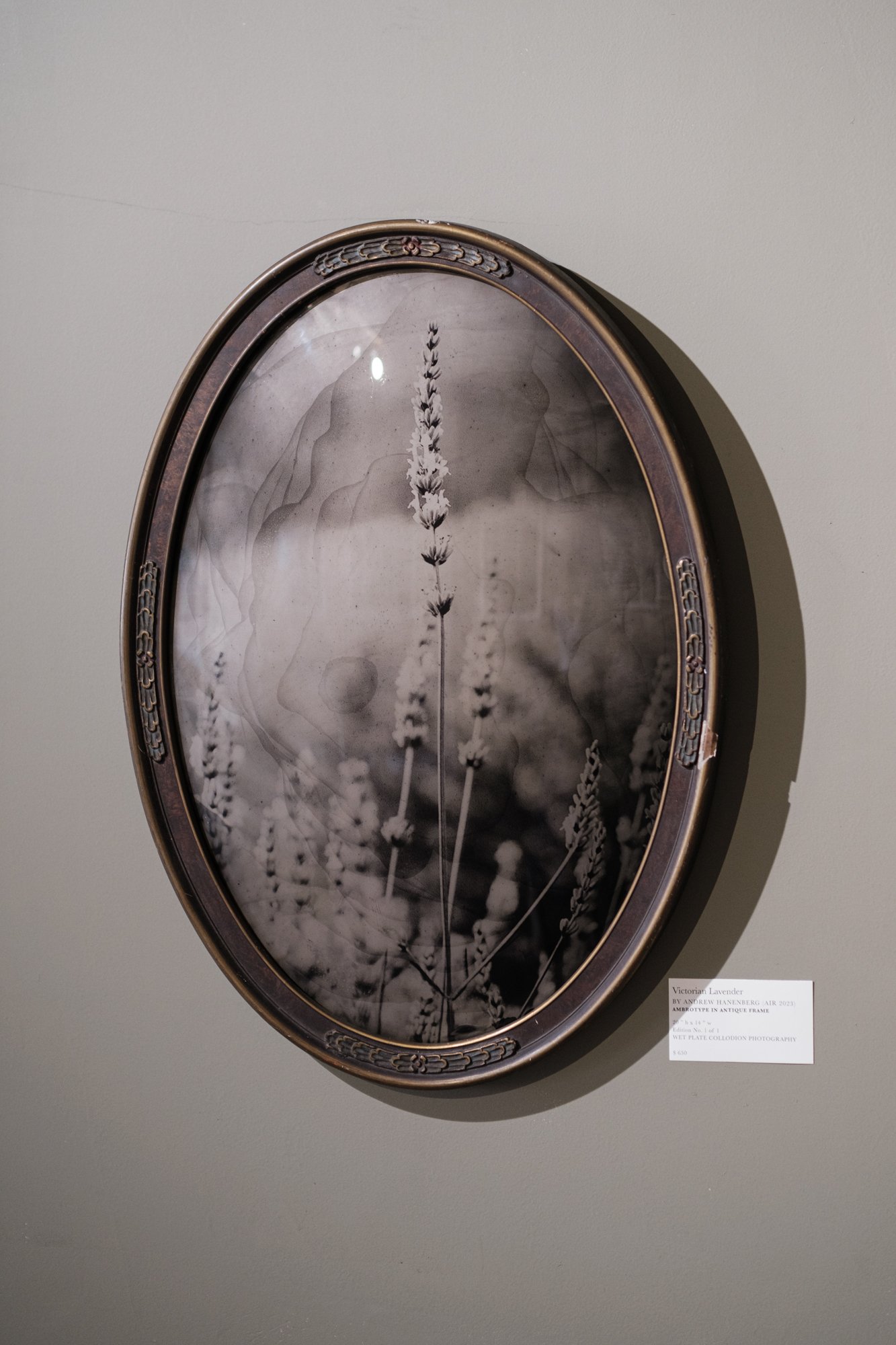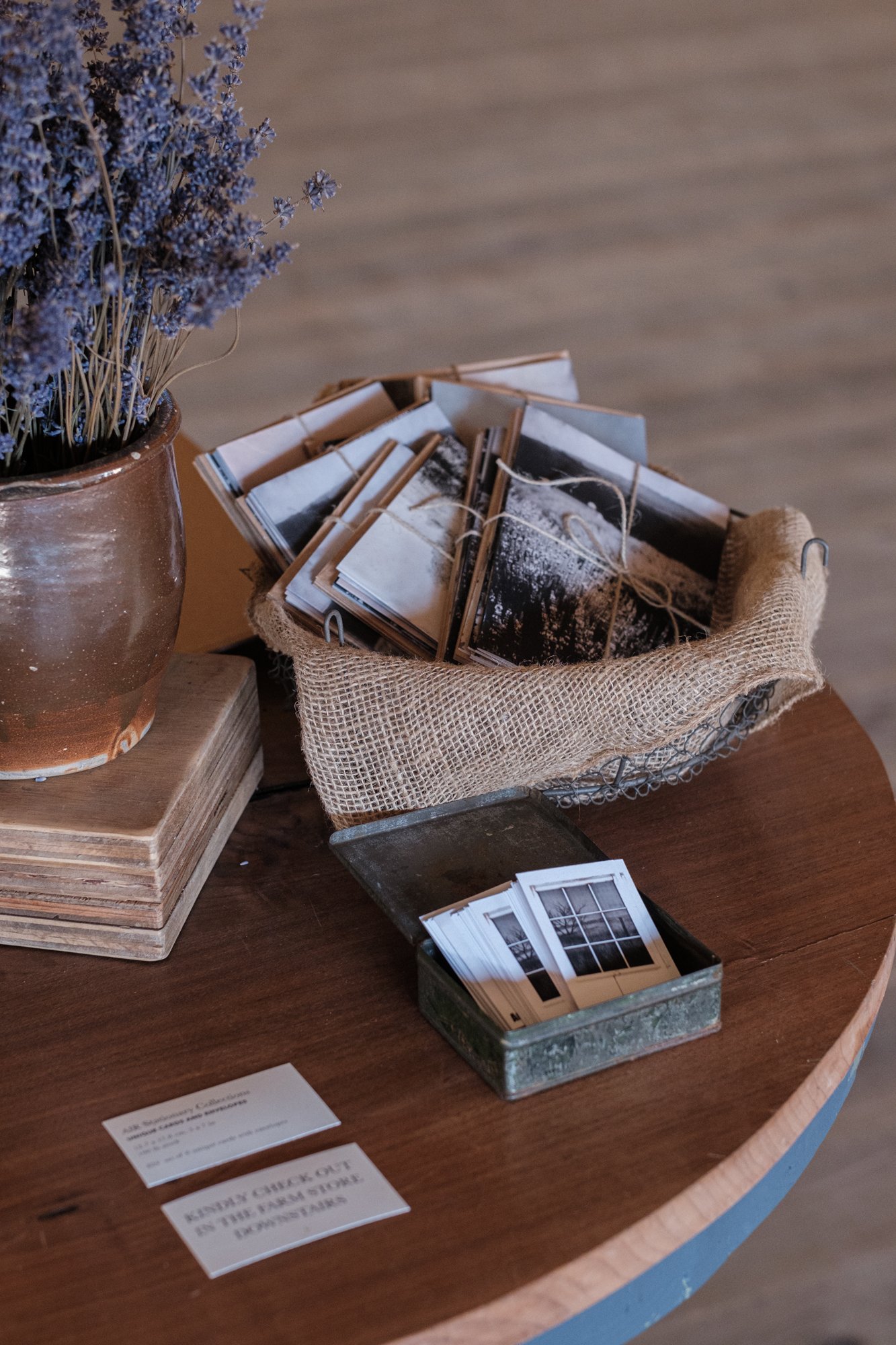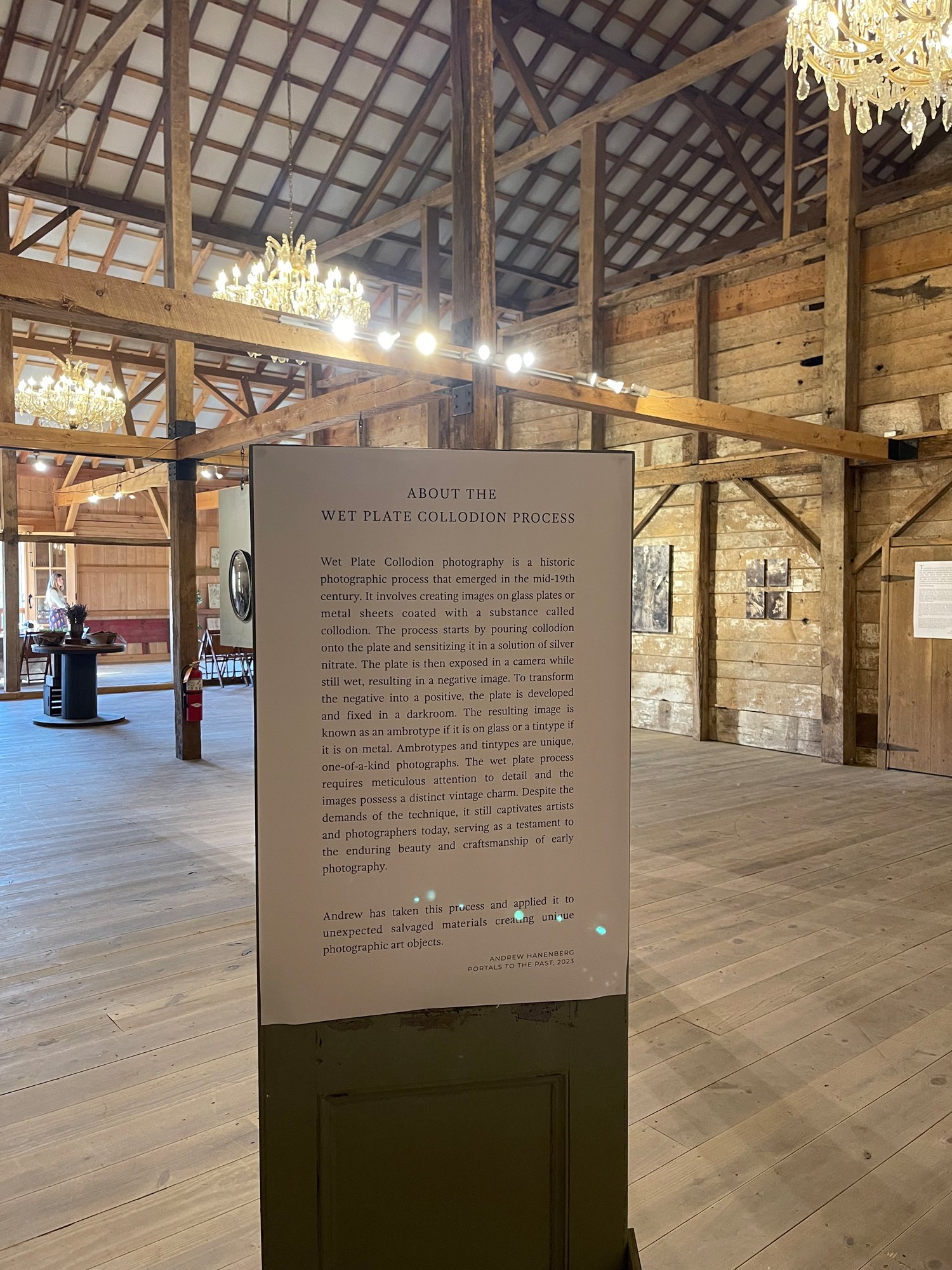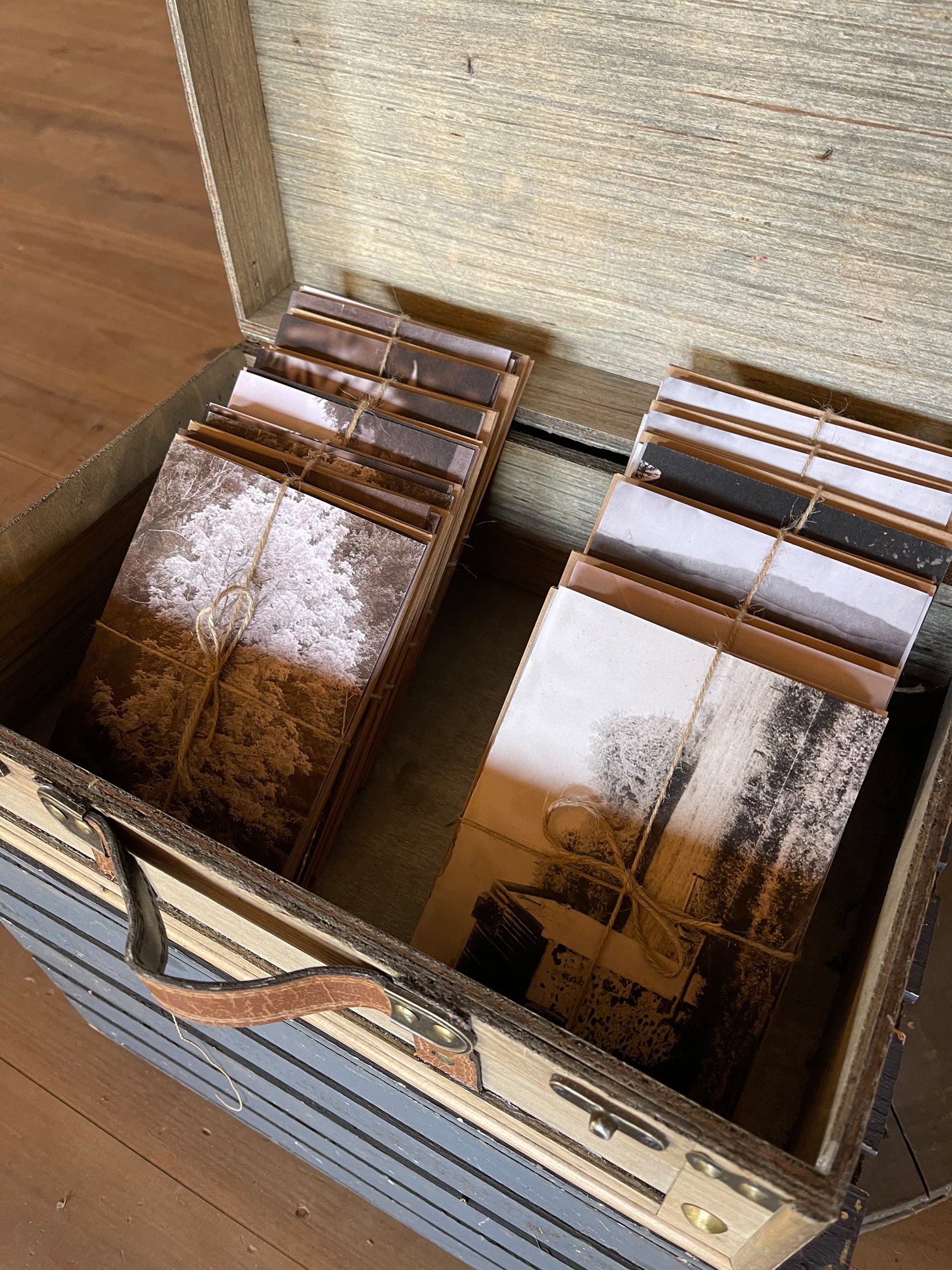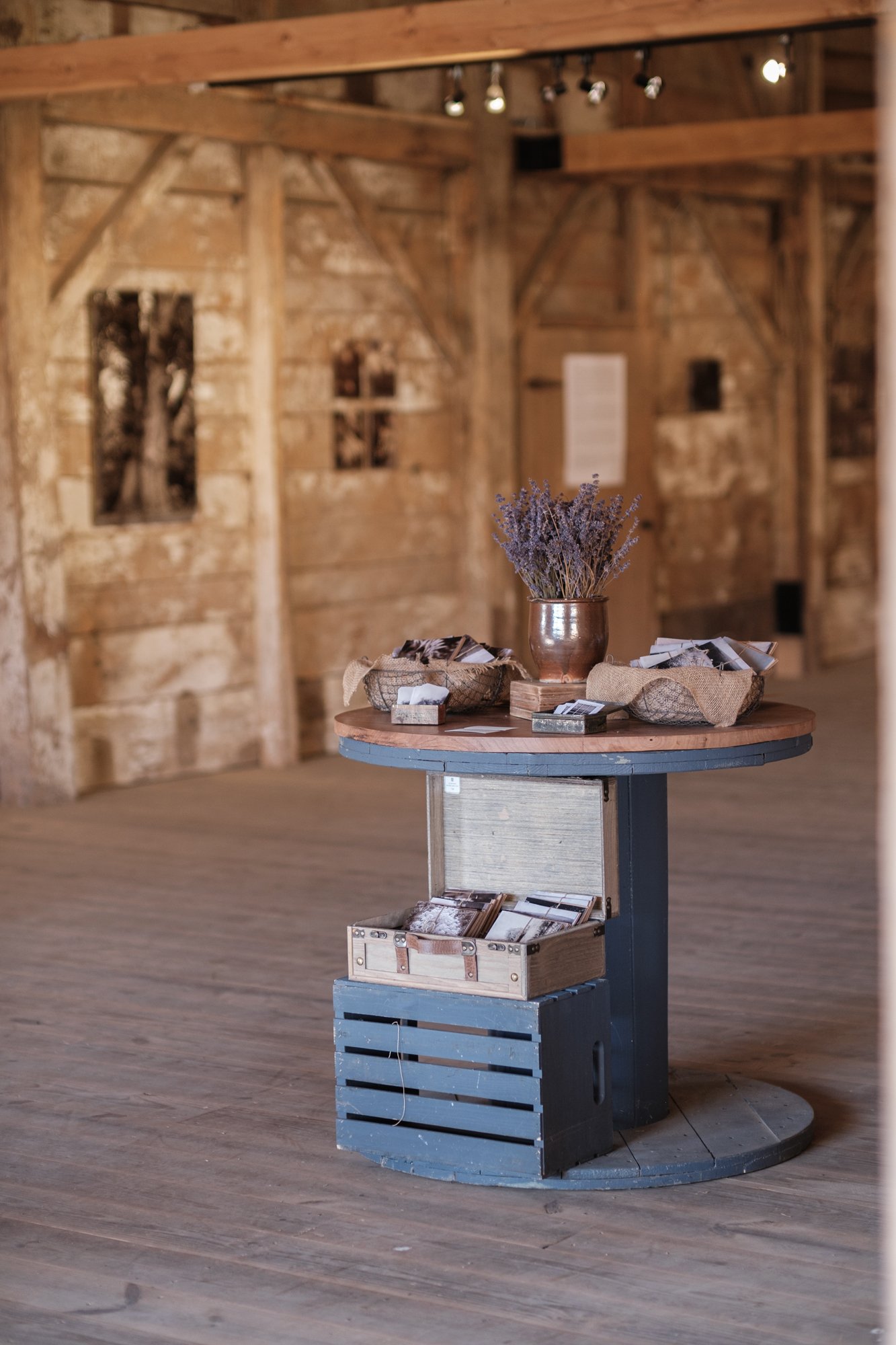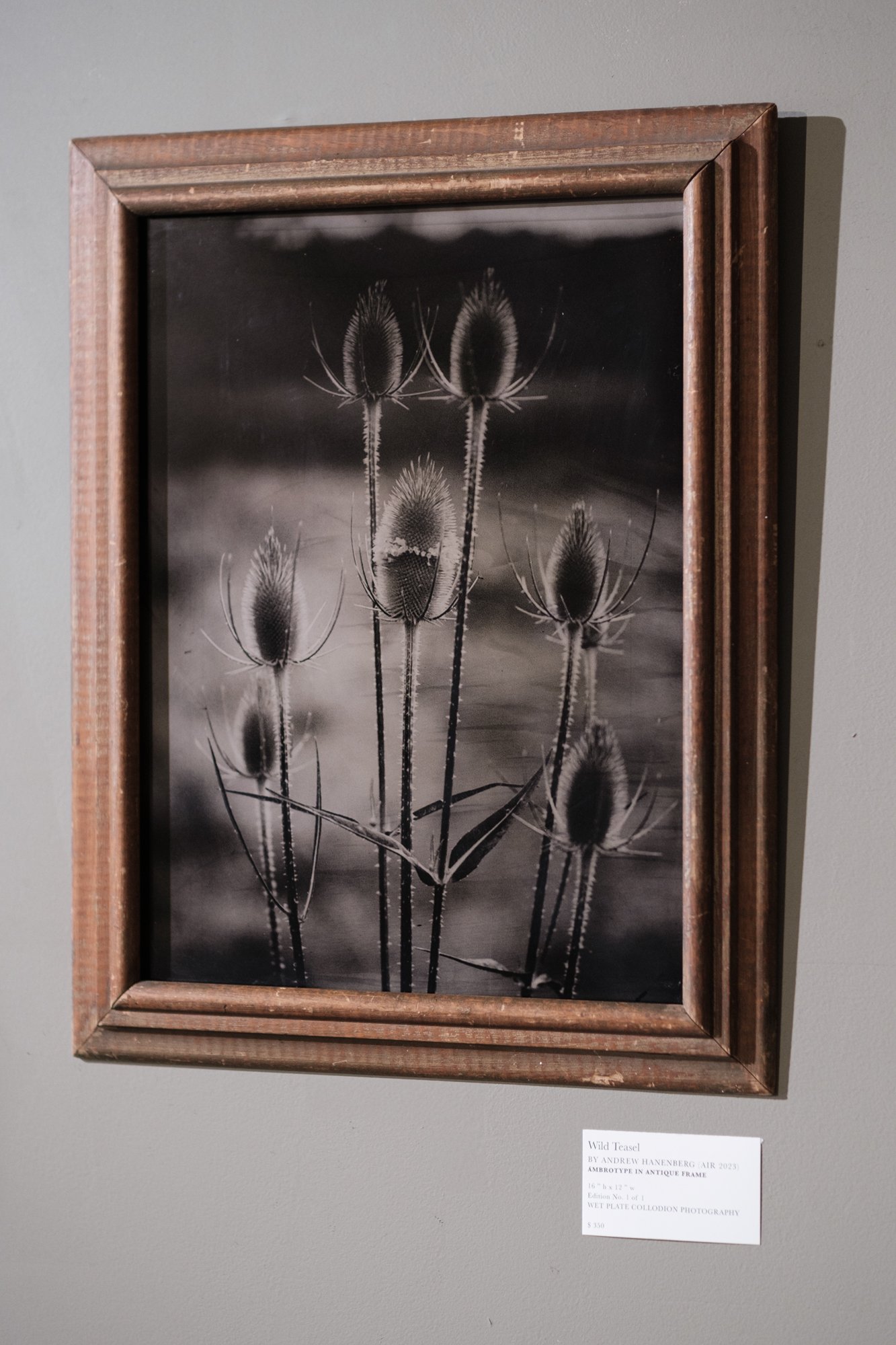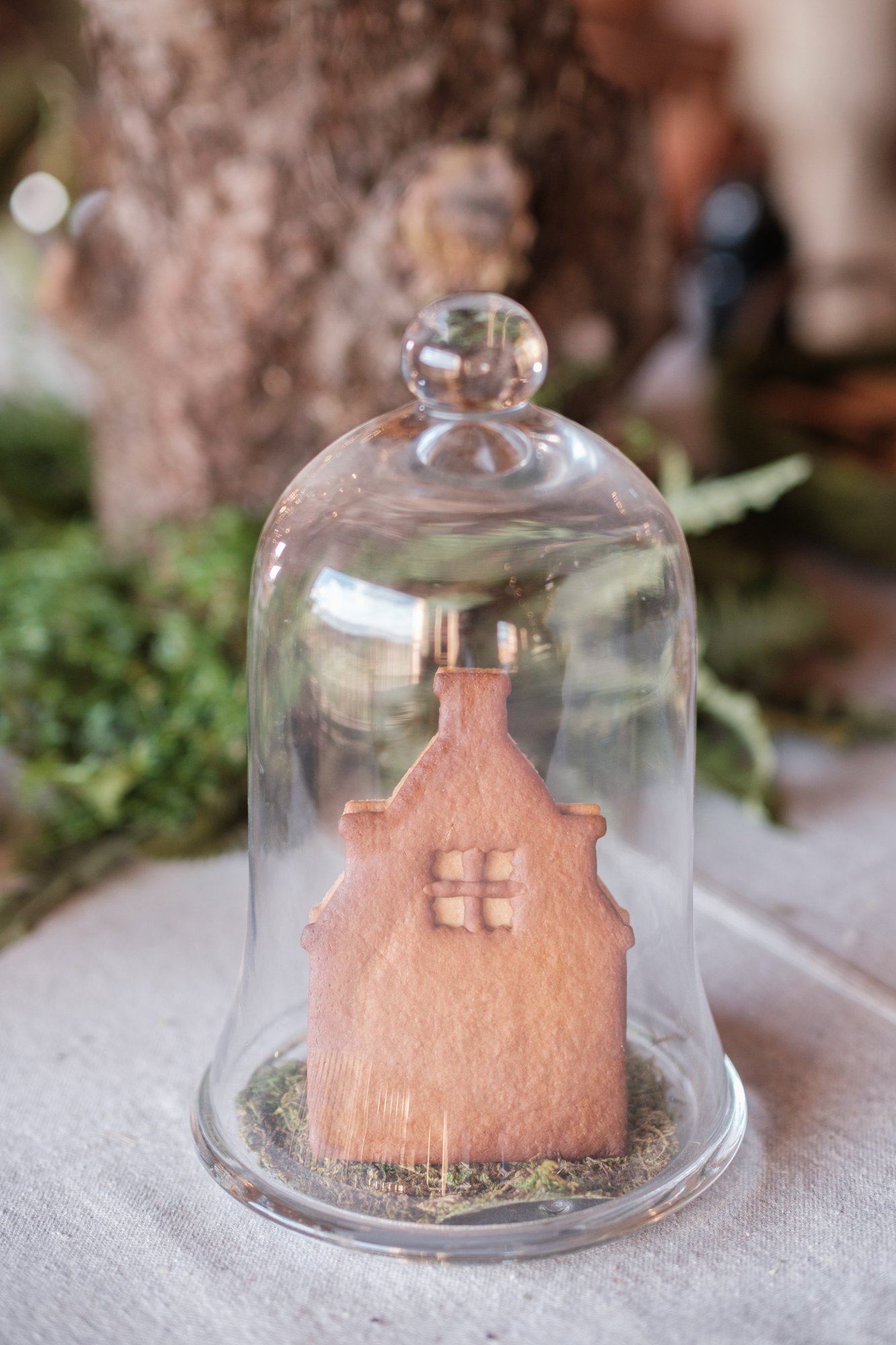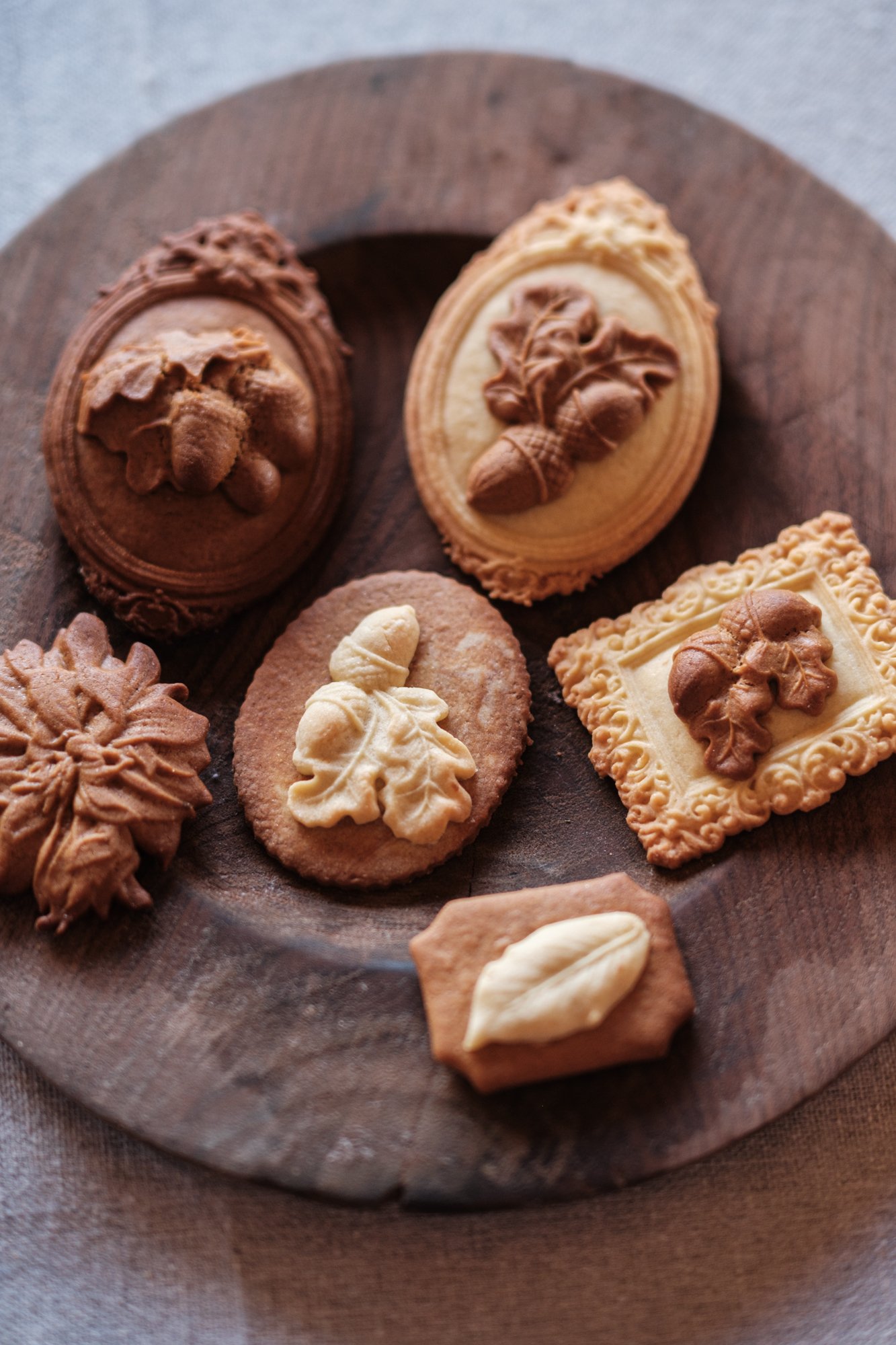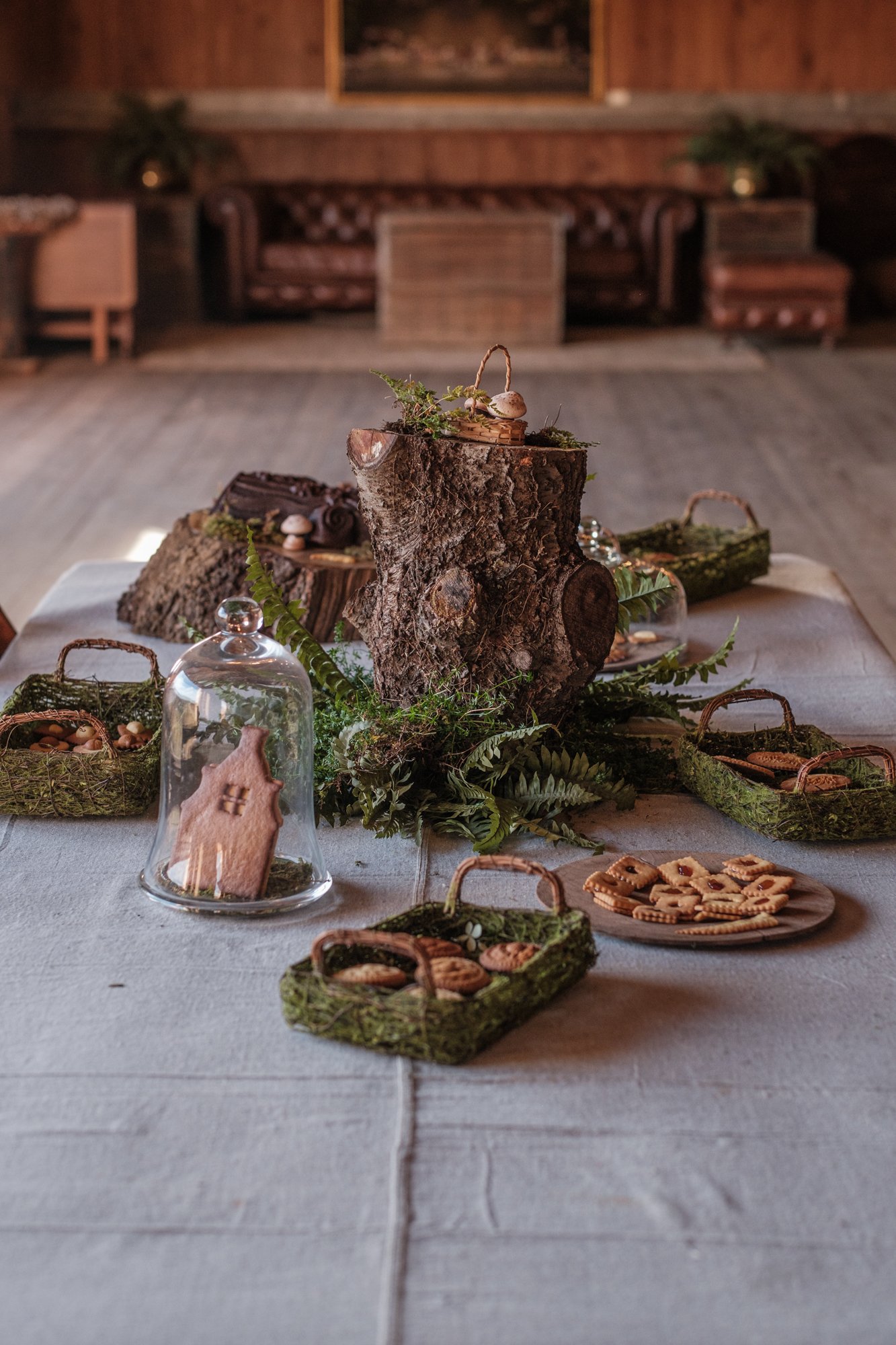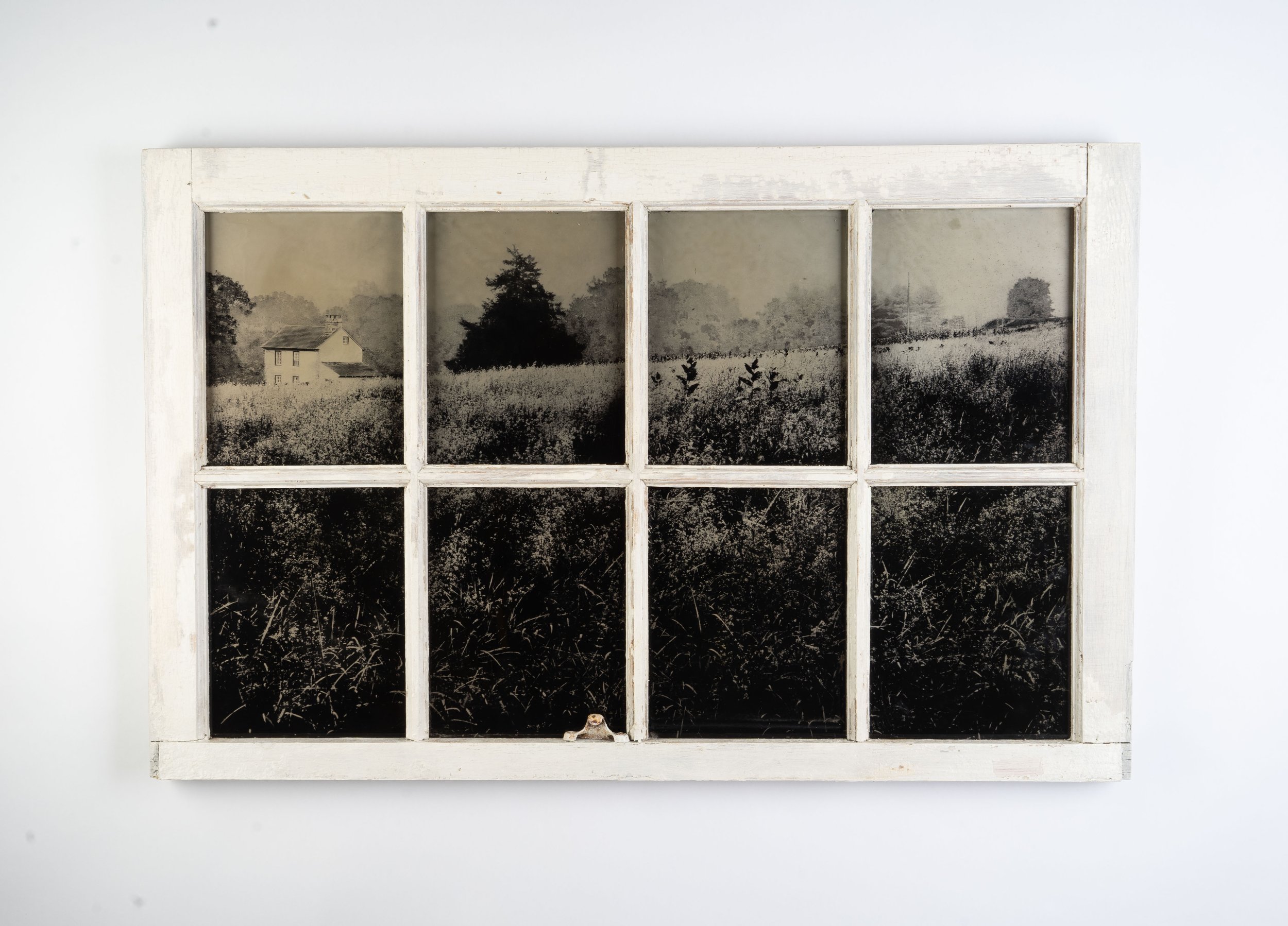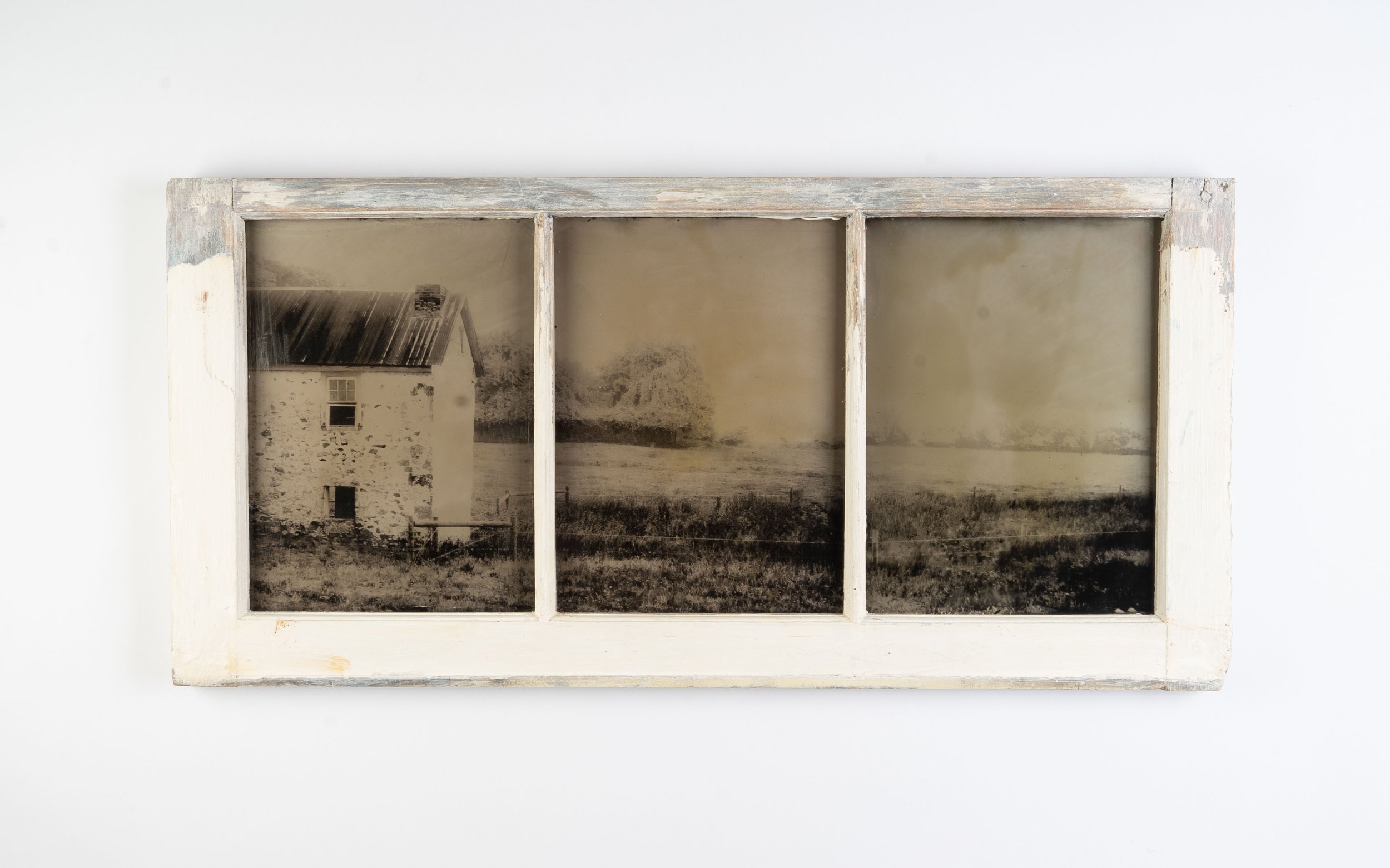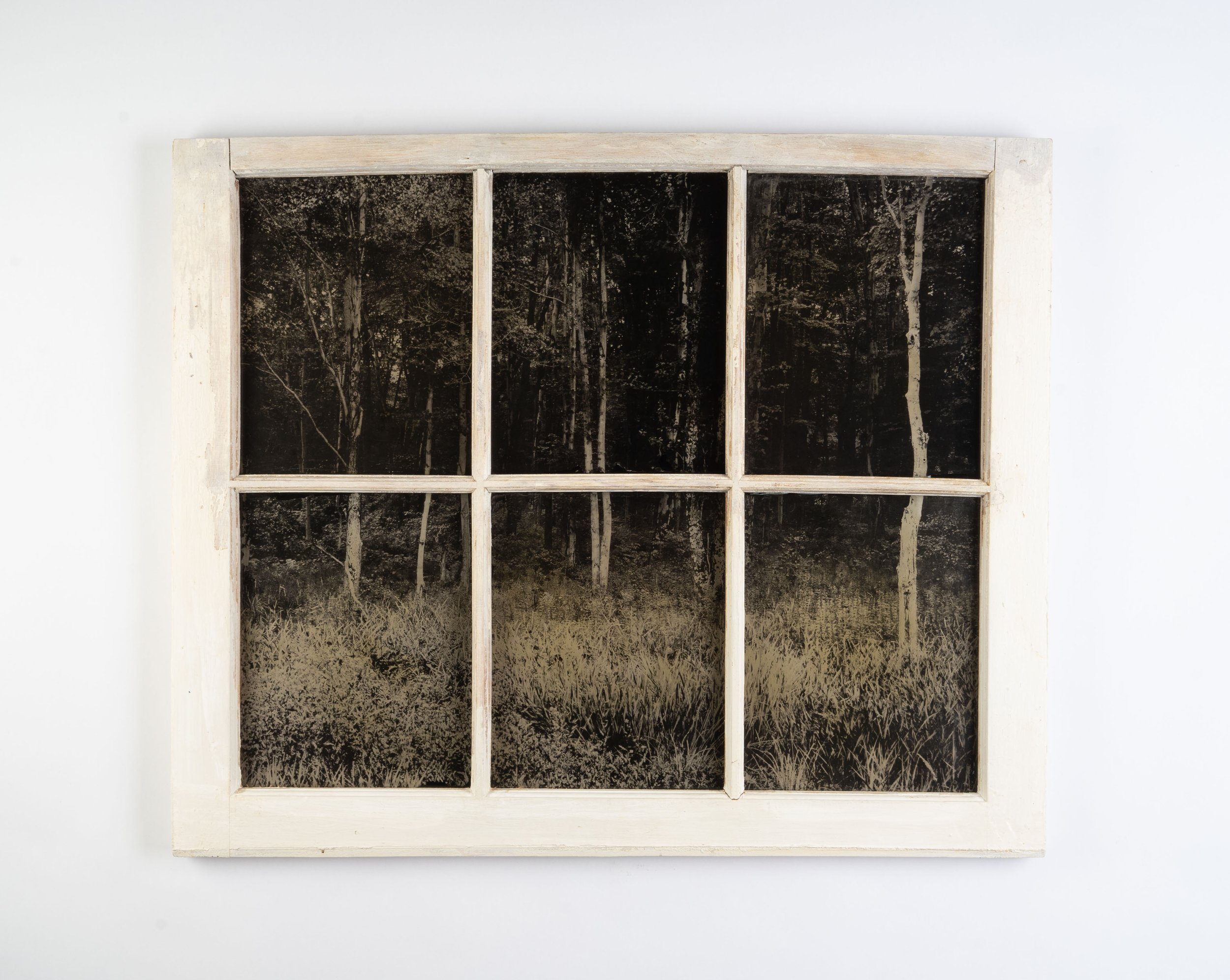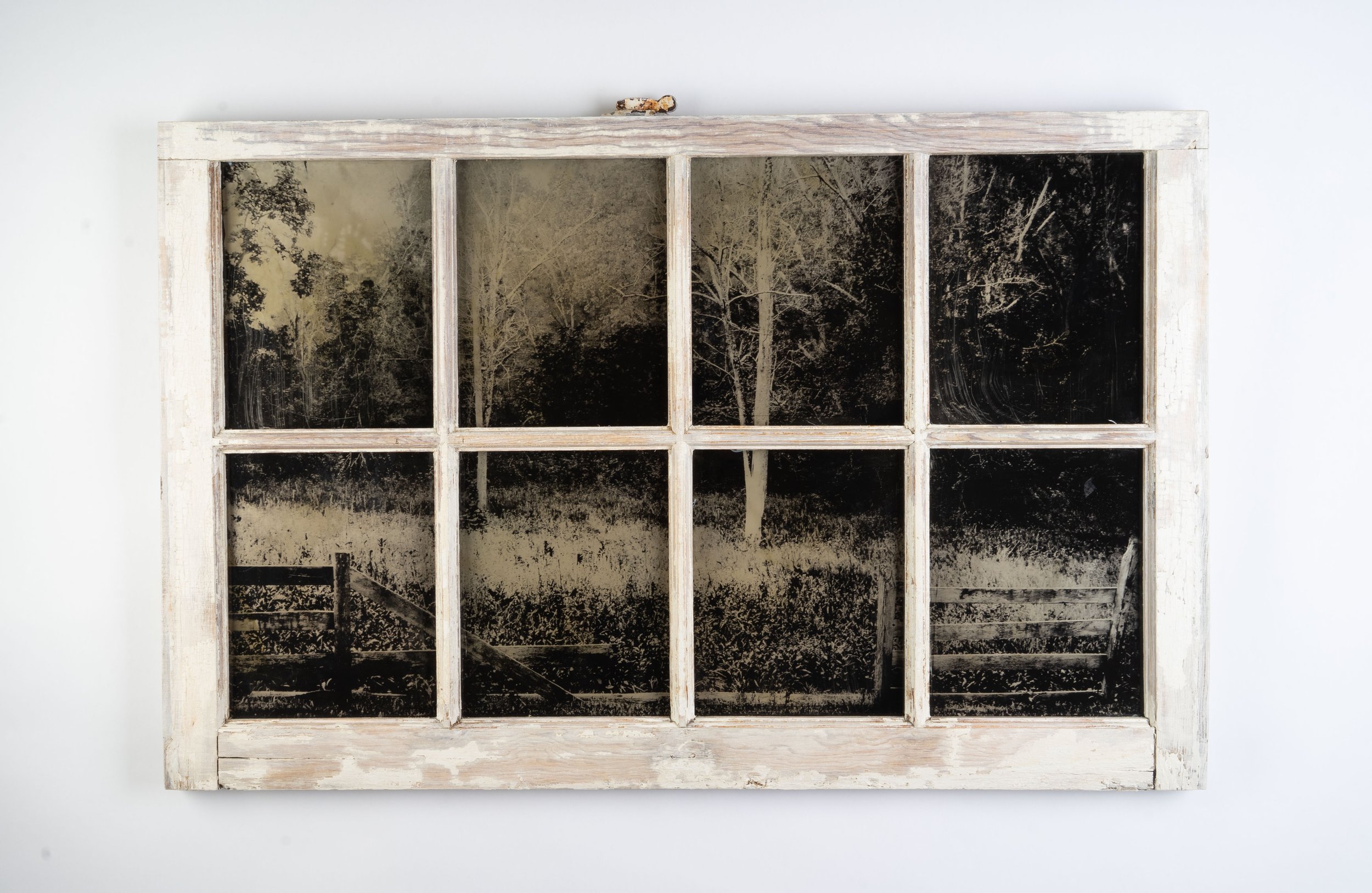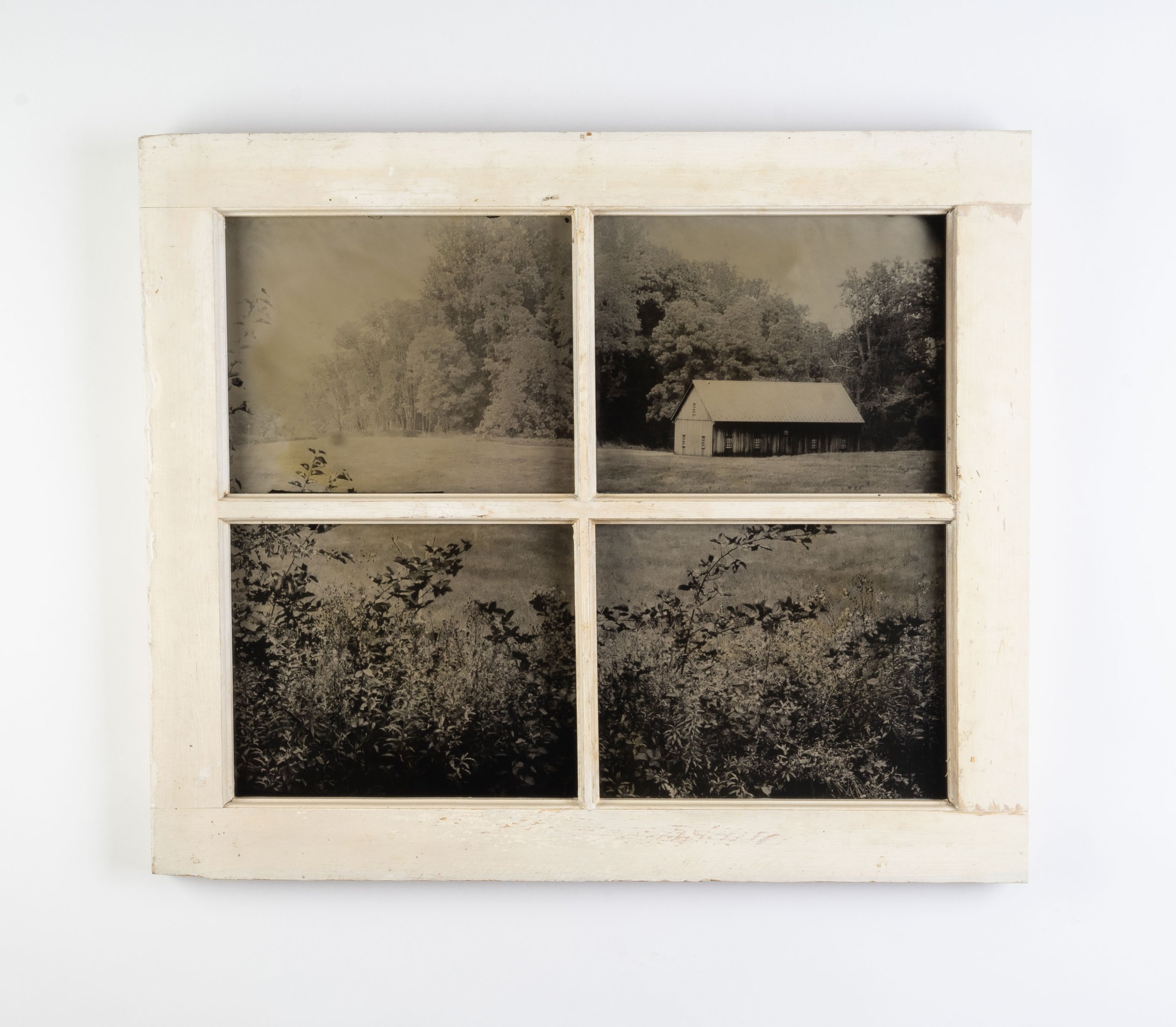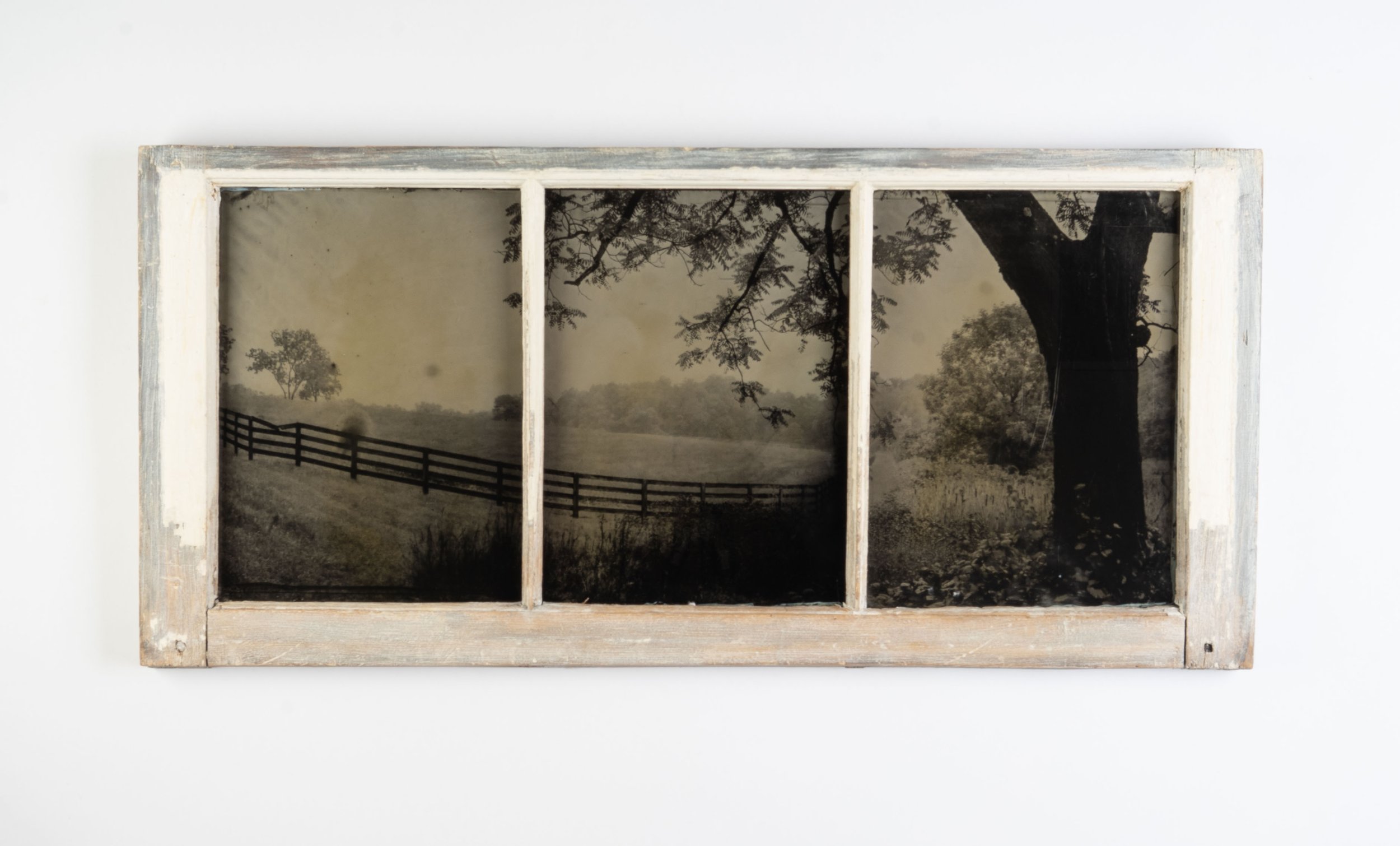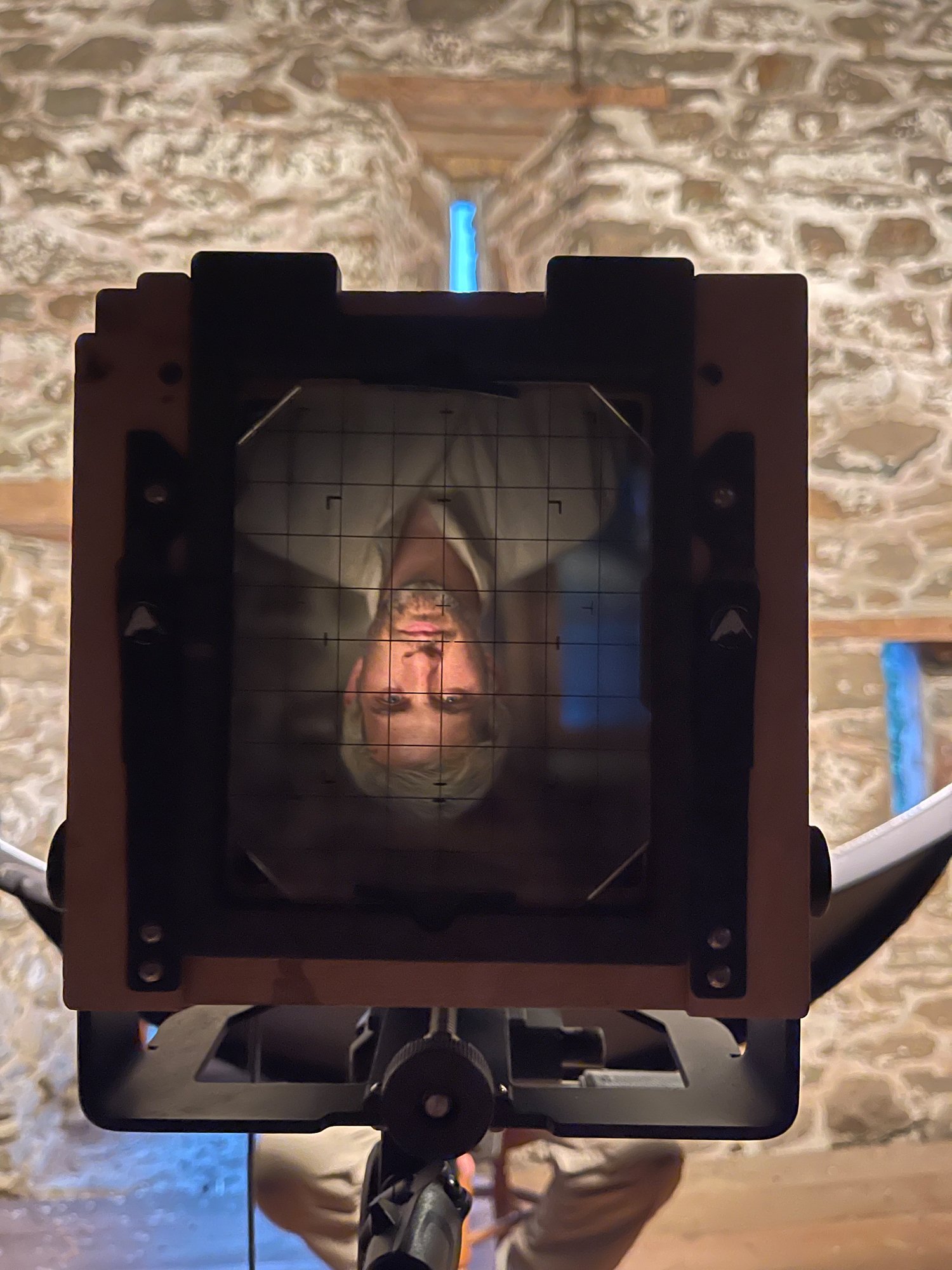Portals to the Past
WET PLATE COLLODION | Ambrotypes and Tintypes
We hosted Andrew Hanenberg as one of two Artist in Residence, for the 2023 lavender bloom. Andrew captured the historic nature of our valley using the wet plate collodion photographic process which dates back to the 1860s. Viewers will be transported to another time, where the pastoral charm of this preserved landscape has been captured and presented in 9 architectural salvaged windows and one door from our property.
ARTIST STATEMENT
Humans are often drawn to the allure of nostalgia, seeking inspiration from the technologies and artistic modalities of bygone eras, which hold endless possibilities for reimagination and reinvention. The desire to reinterpret historic technologies is the expression of this longing for the past, incorporating it into the fresh perspectives of the present.
Andrew Hanenberg has embraced this process, modifying the traditional Wet Plate Collodion technique of the mid-1800s. Through the integration of digital enhancements, mixed media, and experimental materials, this timeless technique finds new life and meaning. Using salvaged architectural windows and doors and antique frames, the resulting artworks are unique portals to the past, combining subject and medium to tell a deeper story.
“As I embarked on my journey through the countryside of Warwick Furnace Farm, armed with a historic photographic process, the past unfolded before my eyes. Through the lens of my camera, I witnessed the tangible connection between the physicality of the farm's structures, the visual landscapes that surrounded them, and the weight of the historical significance they carried.”
This body of work fosters a reverence for the landscapes that have shaped this region with an appreciation for the preservation of historic buildings and land conservation. These historic buildings are links to the past, representing the collective memory of the community. Each structure holds stories of the people who inhabited it, the events that unfolded within its walls, and the architectural styles that shaped its design. Moreover, the conservation of land is essential for our well-being, protecting our ecosystems from irreversible damage caused by overdevelopment.
These installations provide an opportunity to bring history to life, inspiring curiosity and fostering a deeper understanding of the past ensuring that history remains a vibrant part of our collective consciousness. The result is an artistic dialogue that not only honors the past but also propels us into the future creating a catalyst to preserve and protect this history.
ANDY HANENBERG PORTALS TO THE PAST, 2023
No art exhibition opening would be complete without an artistic culinary accompaniment from the talented Dolly Rosen. Each mouth-watering creation was inspired by the art on display, adding an extra layer of creativity to an already visually stunning event.
ABOUT THE WET PLATE COLLODION PROCESS
Wet Plate Collodion photography is a historic photographic process that emerged in the mid-19th century. It involves creating images on glass plates or metal sheets coated with a substance called collodion. The process starts by pouring collodion onto the plate and sensitizing it in a solution of silver nitrate. The plate is then exposed in a camera while still wet, resulting in a negative image. To transform the negative into a positive, the plate is developed and fixed in a darkroom. The resulting image is known as an ambrotype if it is on glass or a tintype if it is on metal. Ambrotypes and tintypes are unique, one-of-a-kind photographs. The wet plate process requires meticulous attention to detail and the images possess a distinct vintage charm. Despite the demands of the technique, it still captivates artists and photographers today, serving as a testament to the enduring beauty and craftsmanship of early photography.
PROCESS
“Throughout my life I have investigated how things work, the limitations, and how I can improve or expand those limitations. With an ever growing dependence on technology, I have found the beauty in slowing down using the traditional mediums of photography. The excitement of trying a new technique and the joy of unexpected mistakes pushes me to explore further.”
ABOUT THE ARTIST
Ever since childhood curiosity has been a blessing and a curse for Andy. Always exploring and exciting to find new ways of doing things and creating new processes. His love of the tangible physical nature of old school photography processes has led him to explore ways to blend those techniques with mixed media ideas to create new mediums to utilize the processes. That has led to years of exploration trying to figure out how make his vision a reality.
Follow along on his creative journey via Instagram: @andrew_hanenberg and on the web at: www.andrewhanenberg.com

